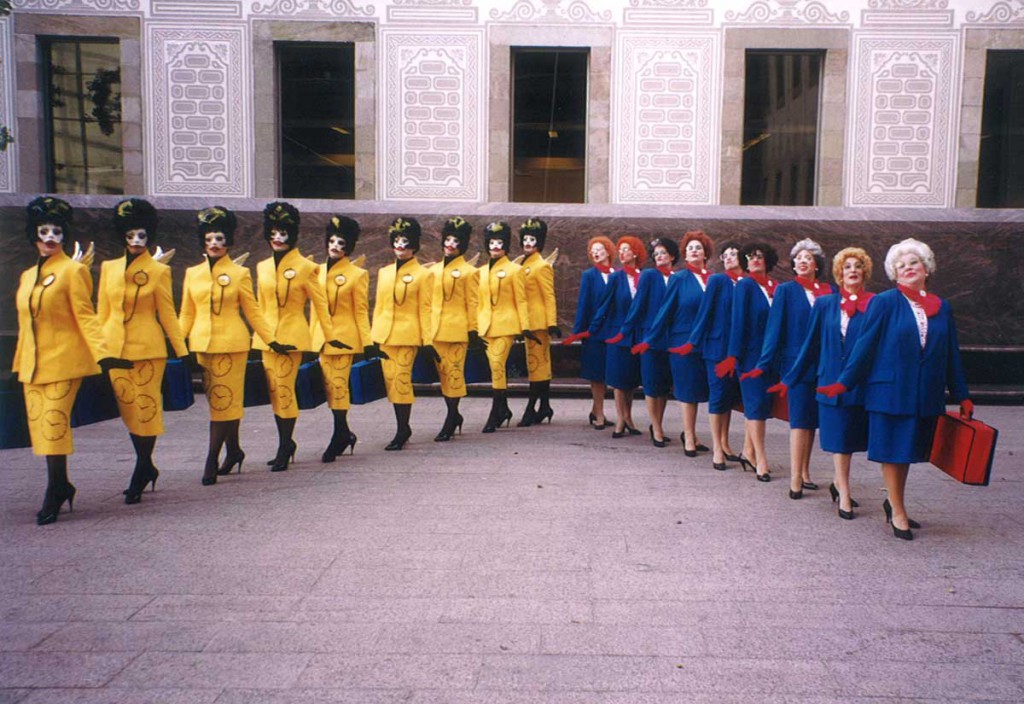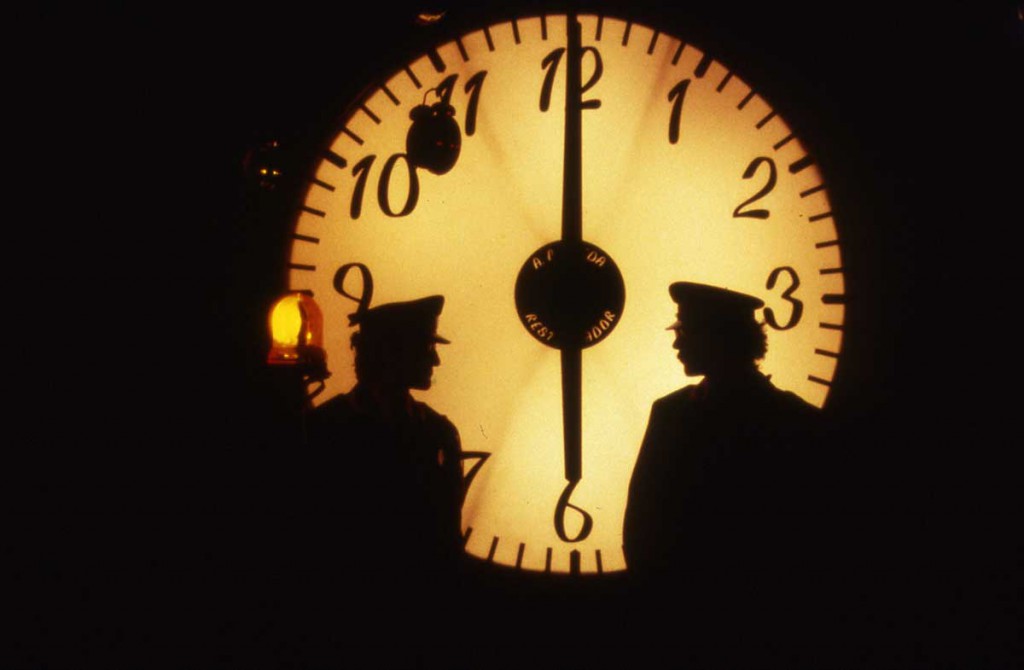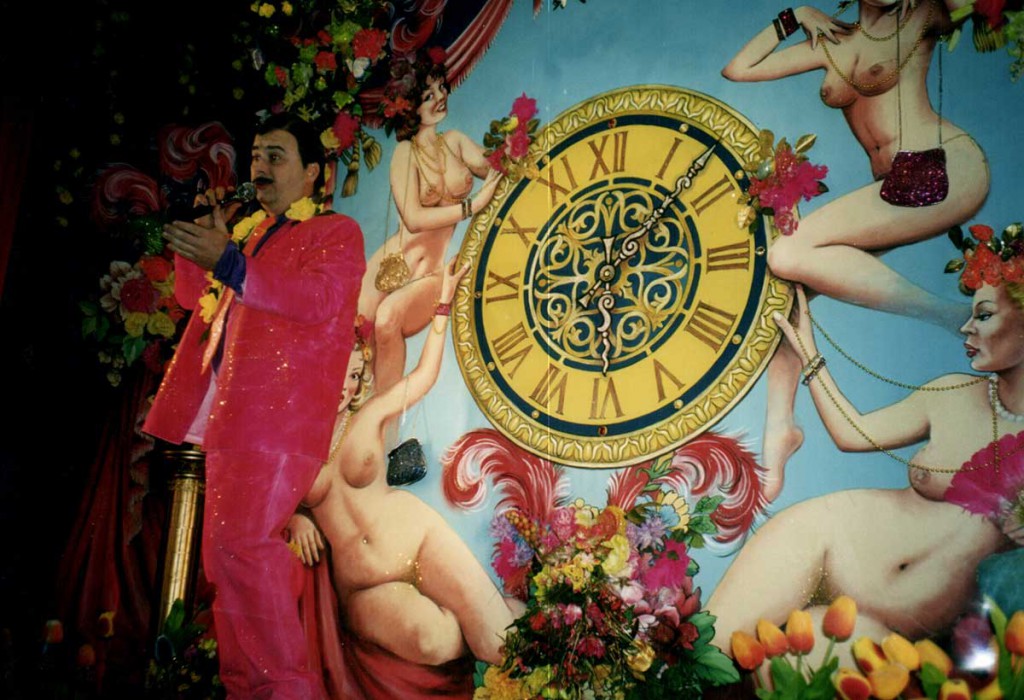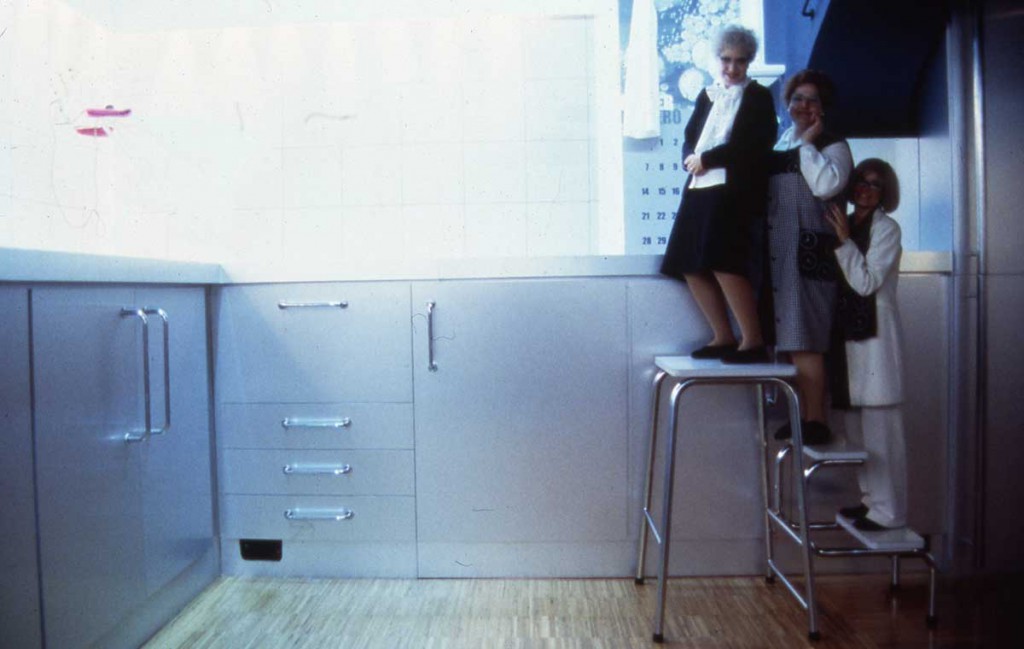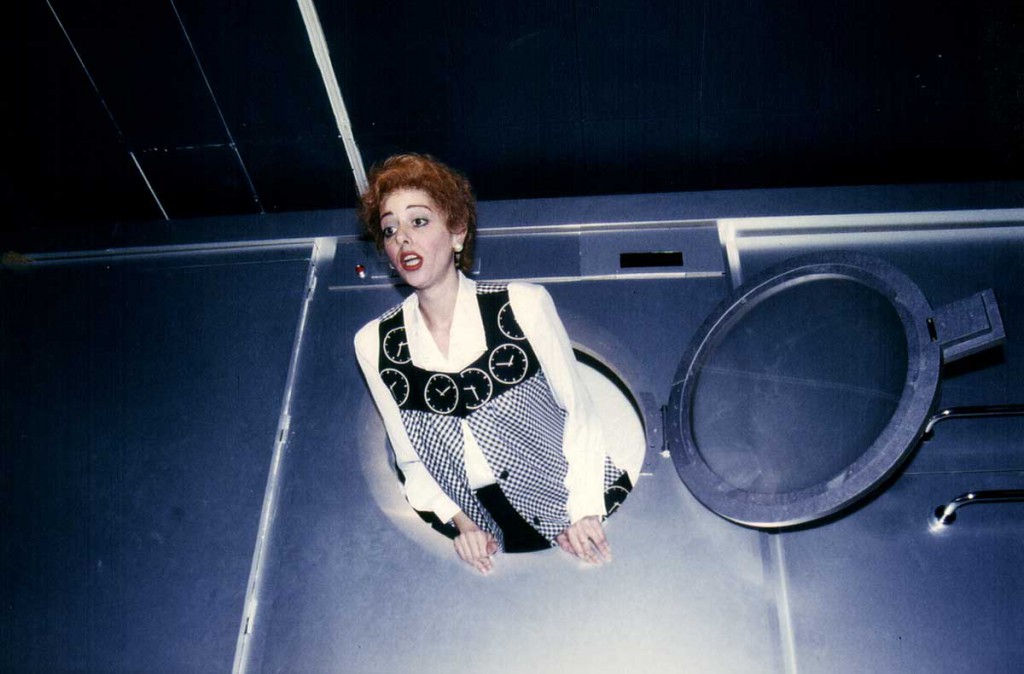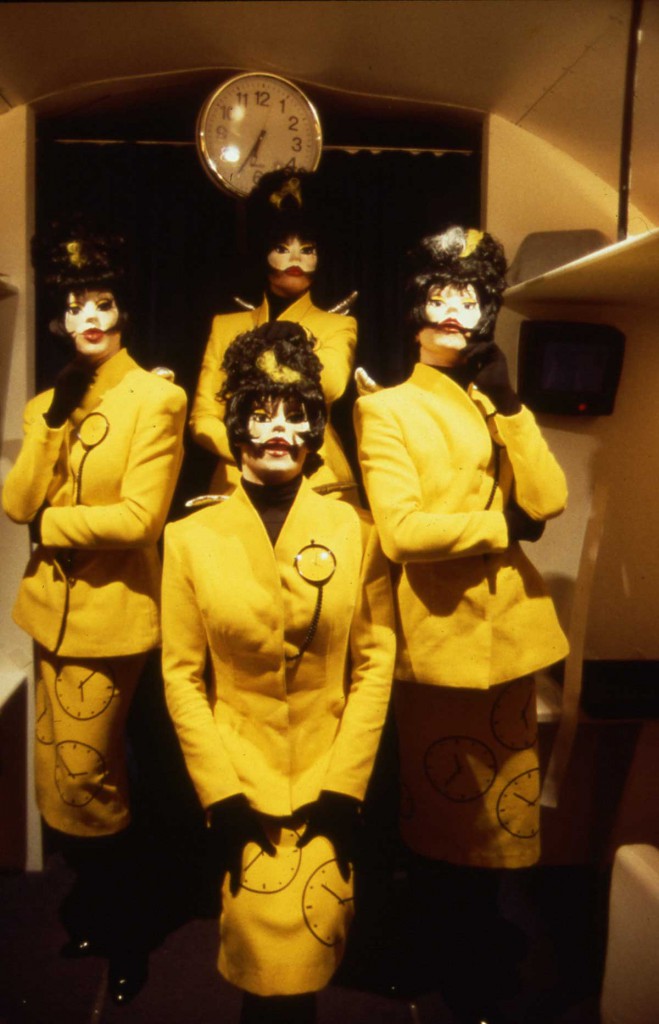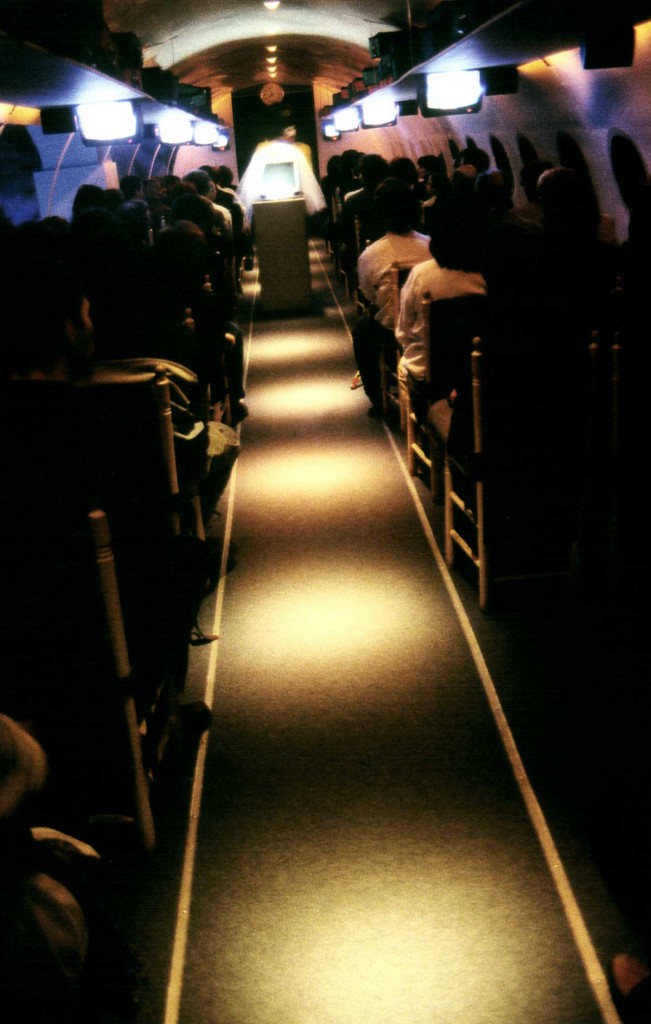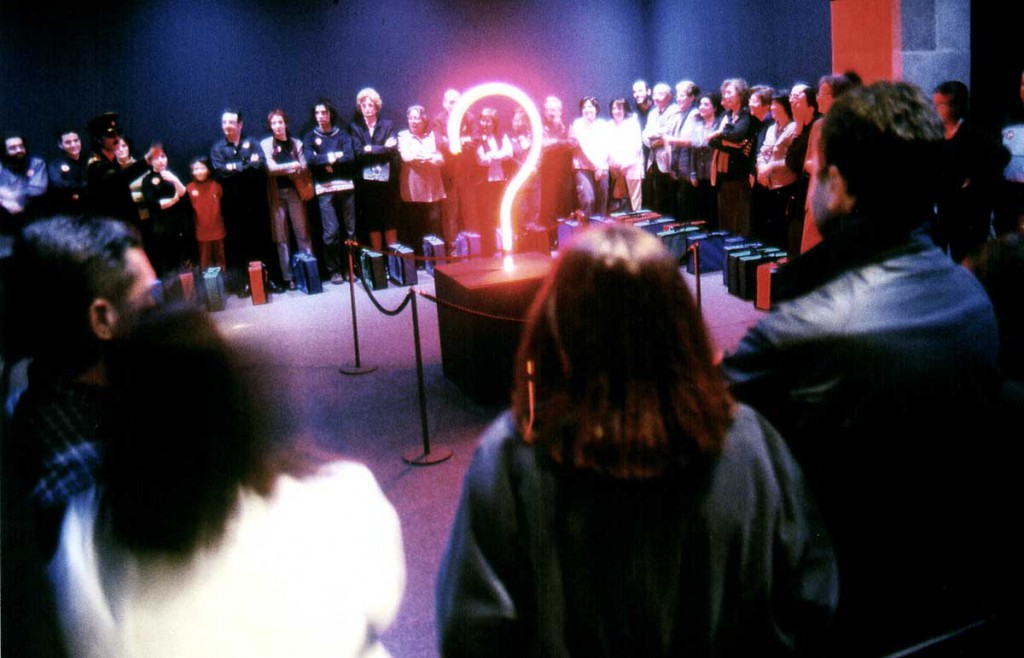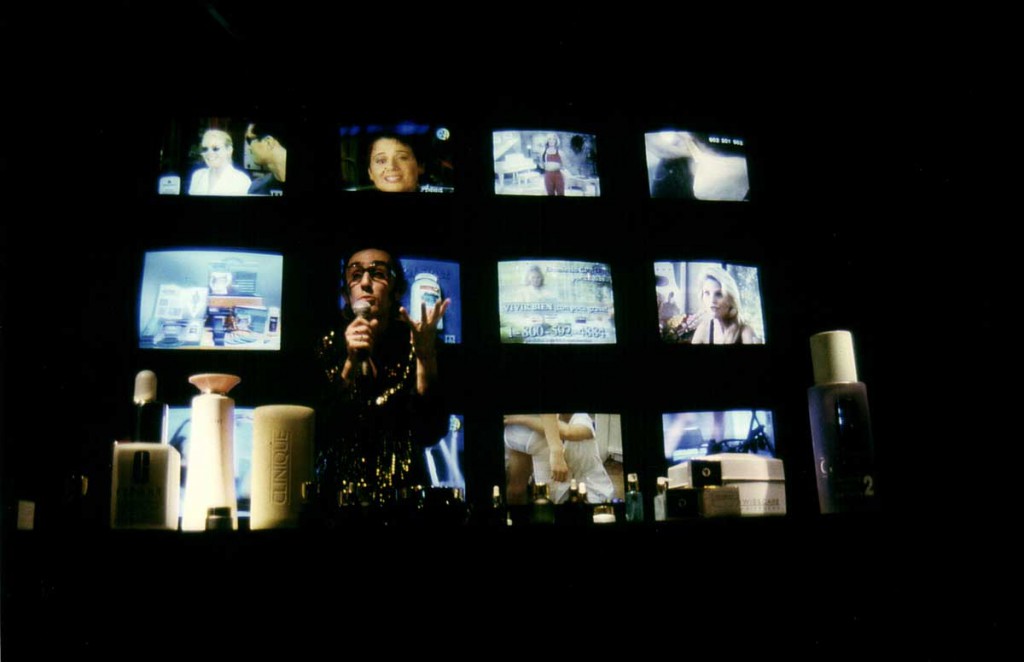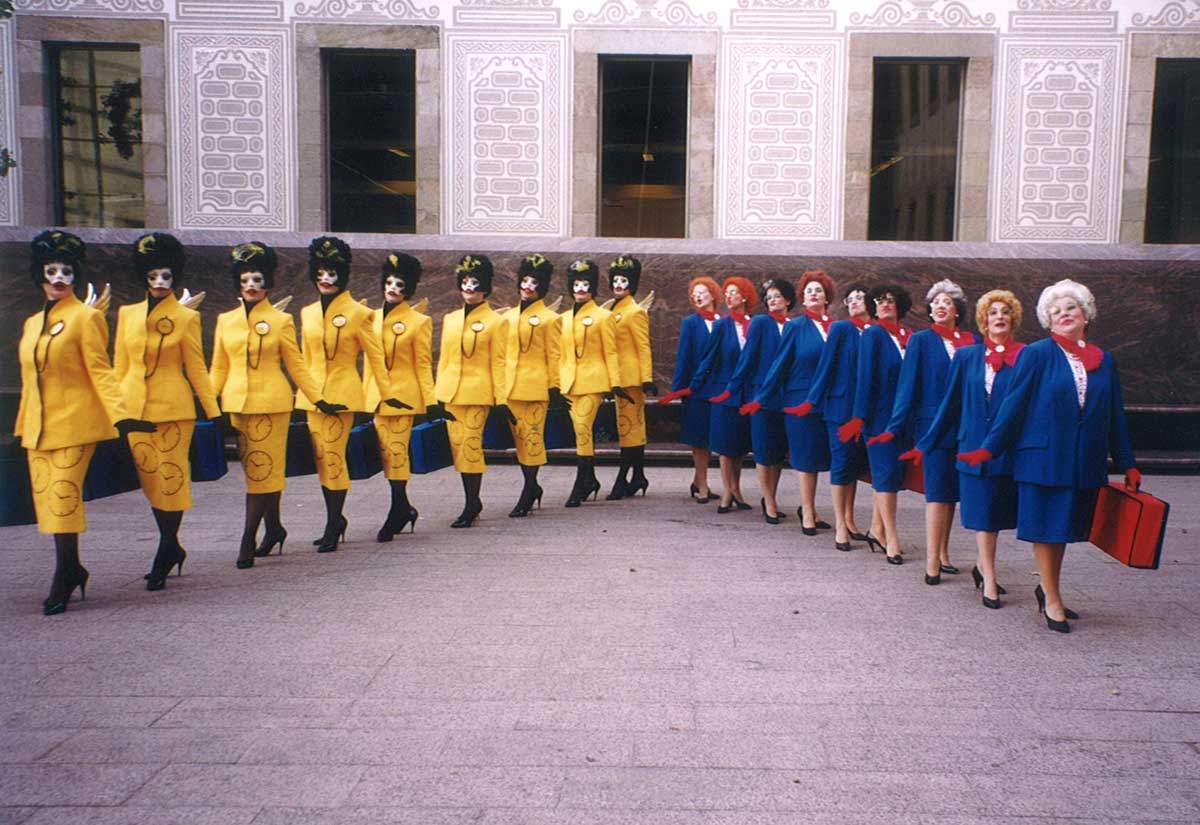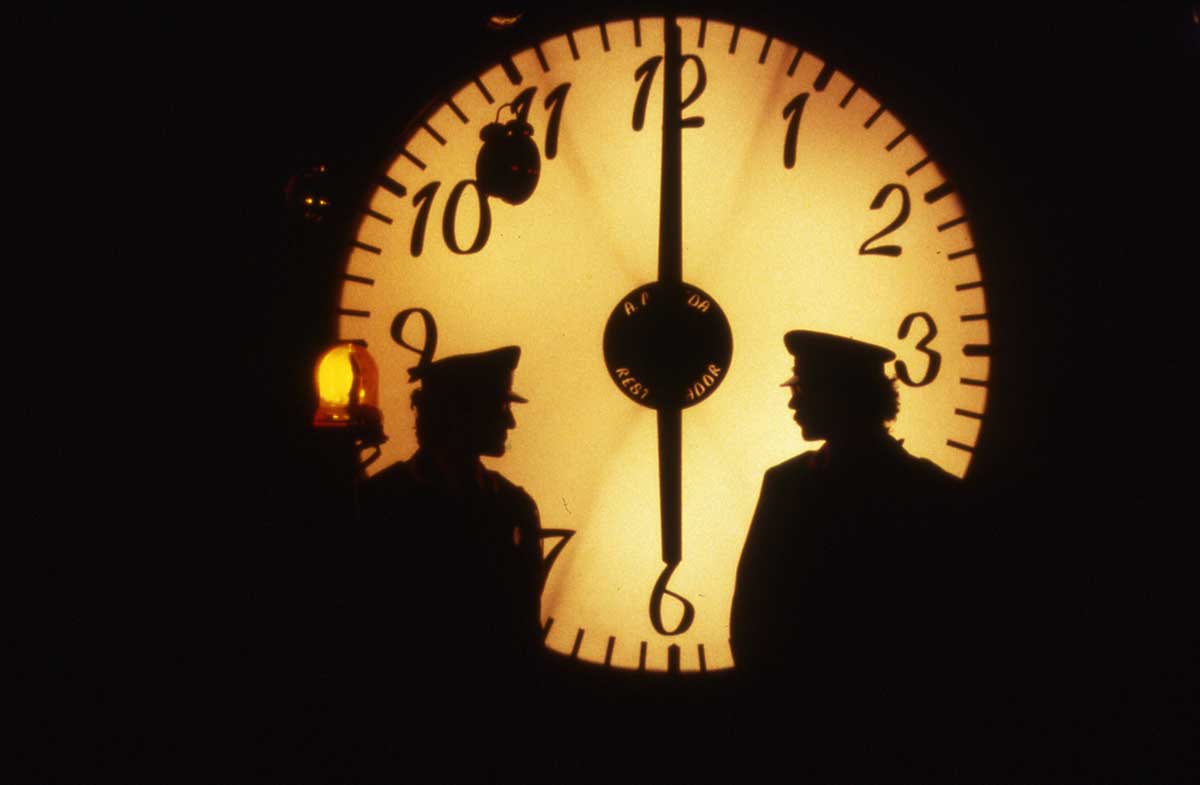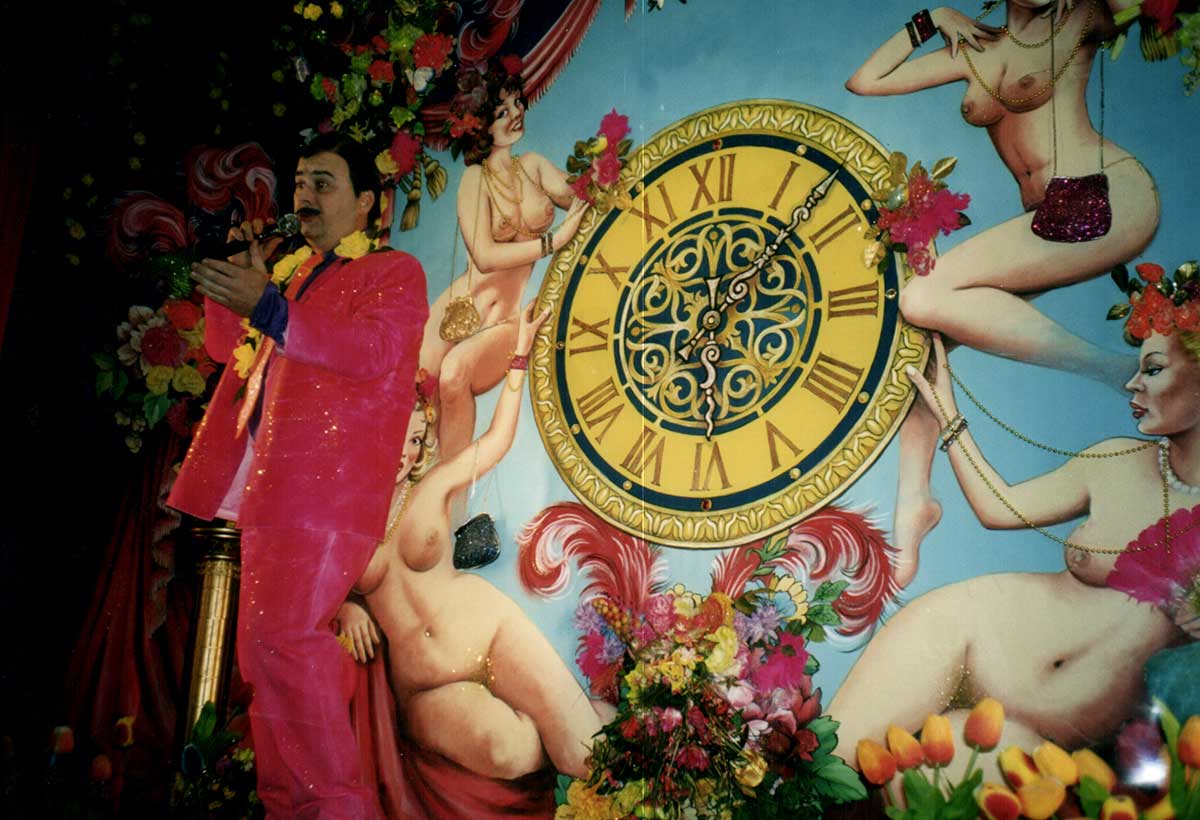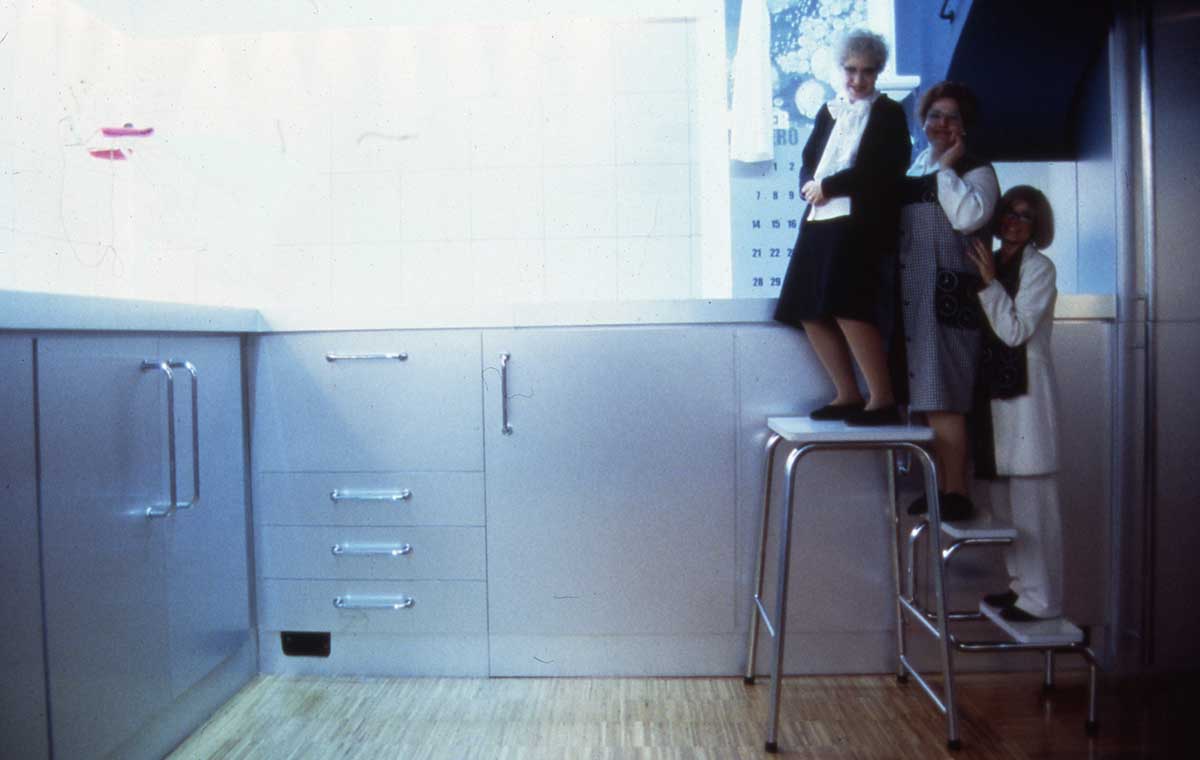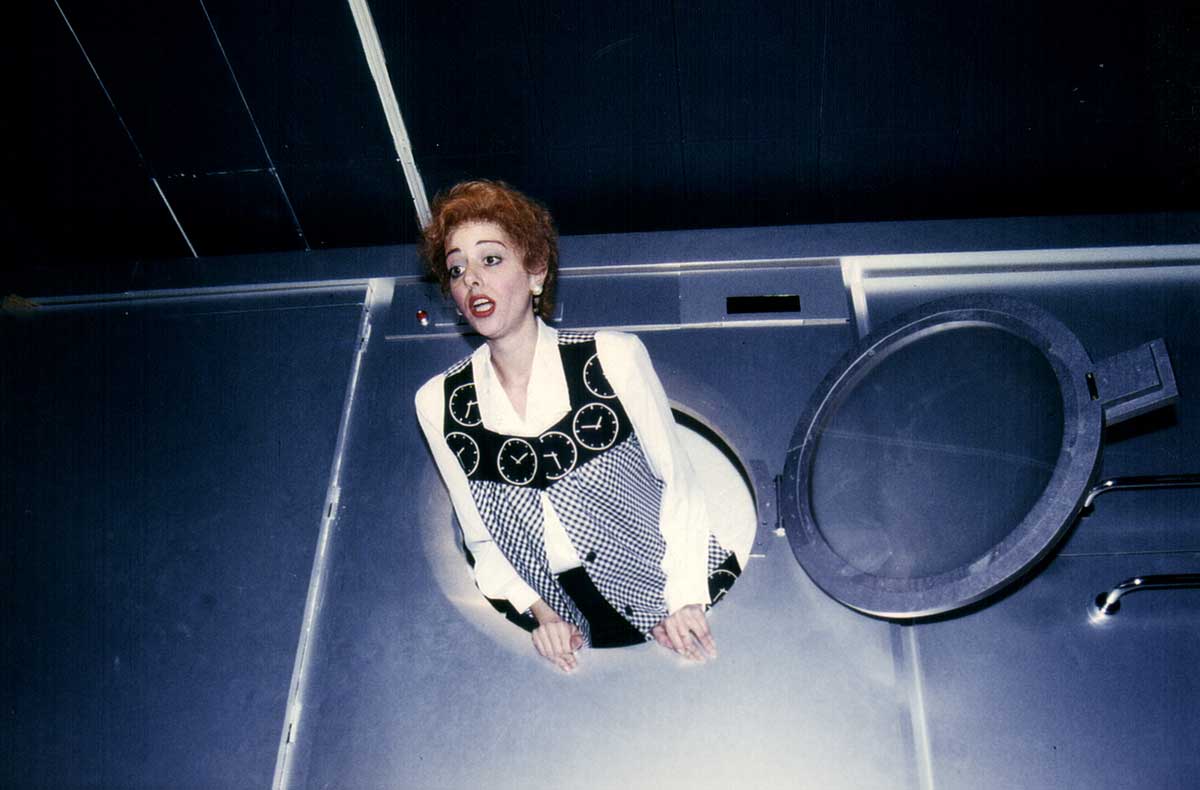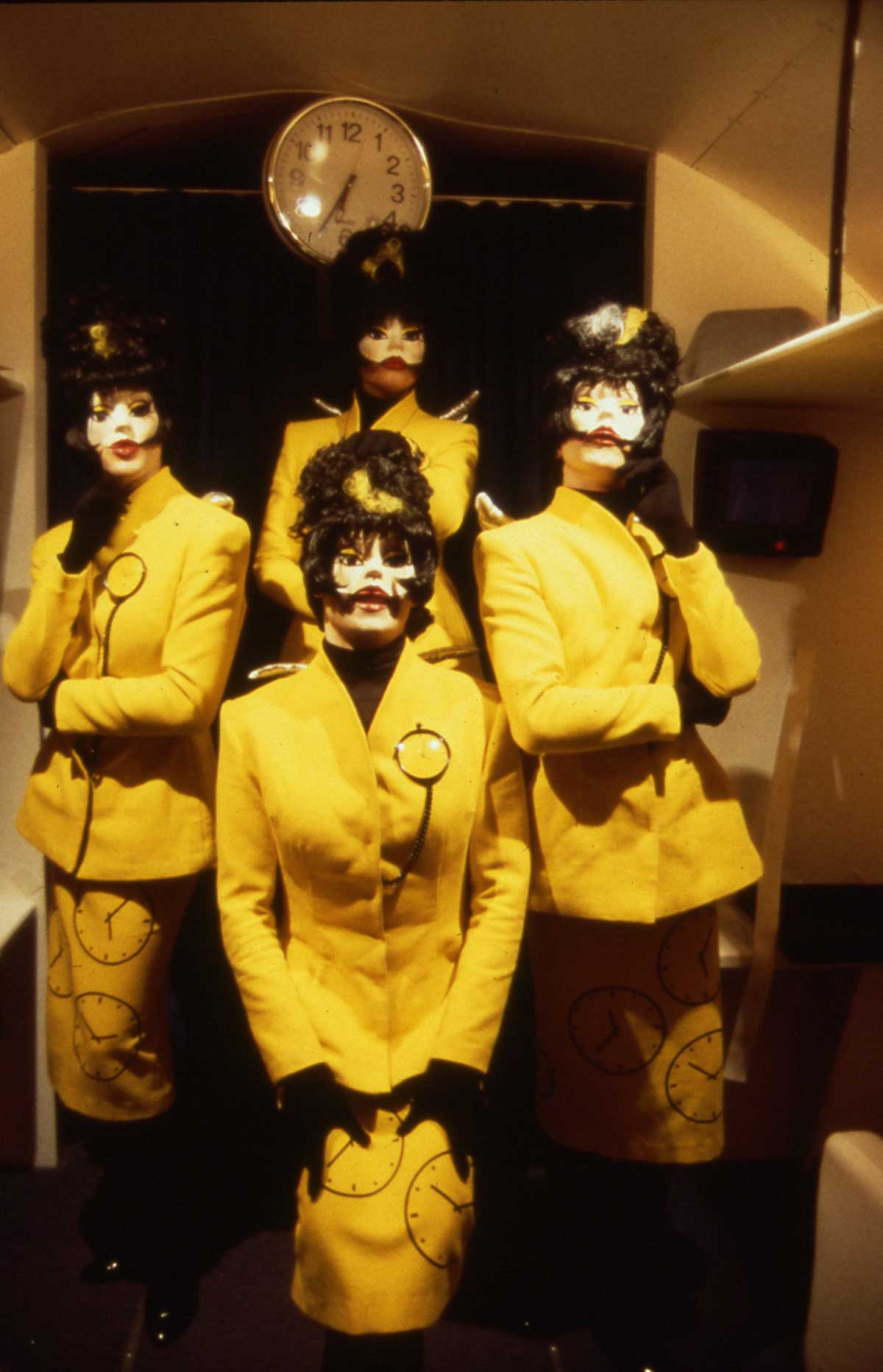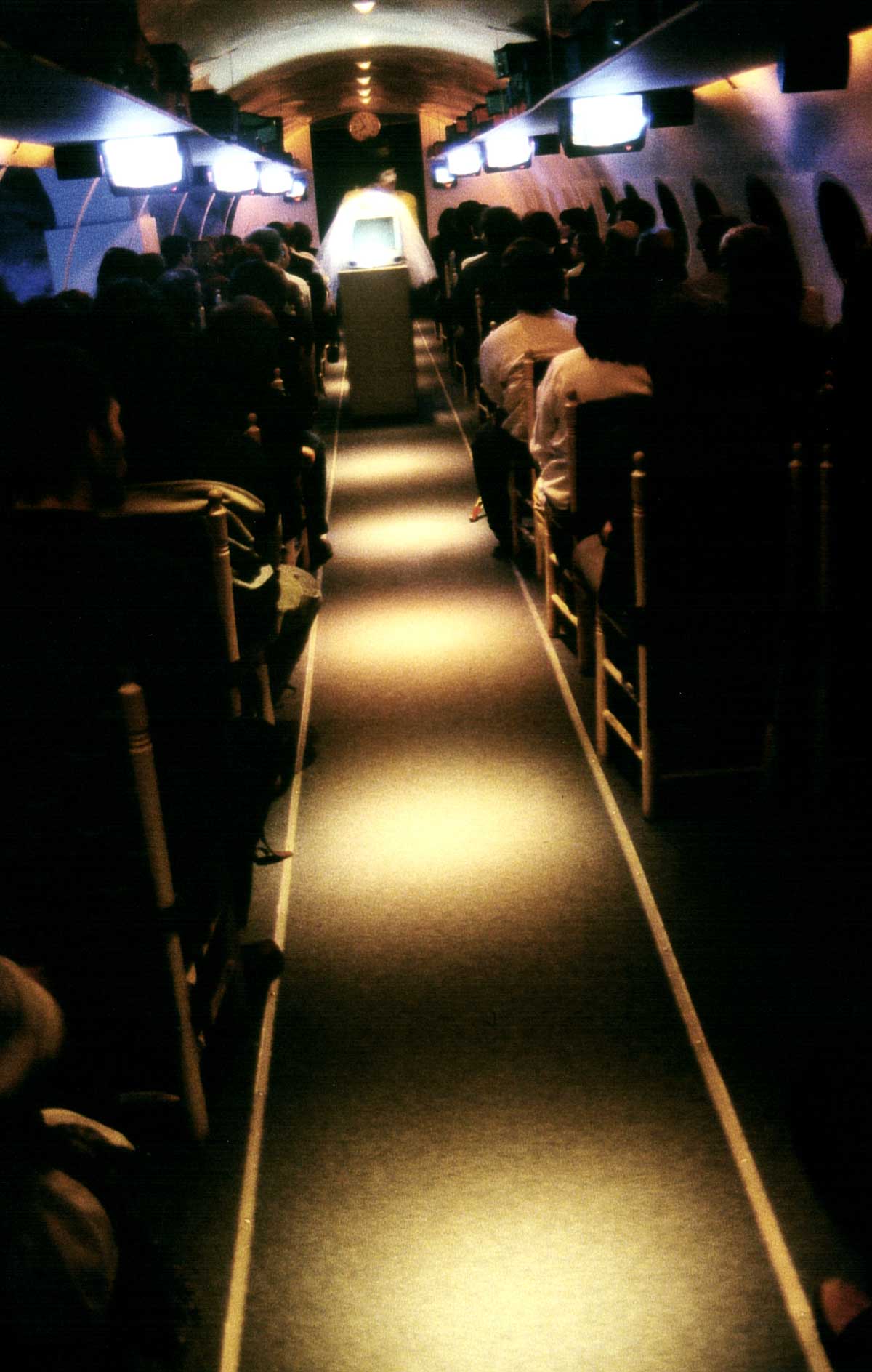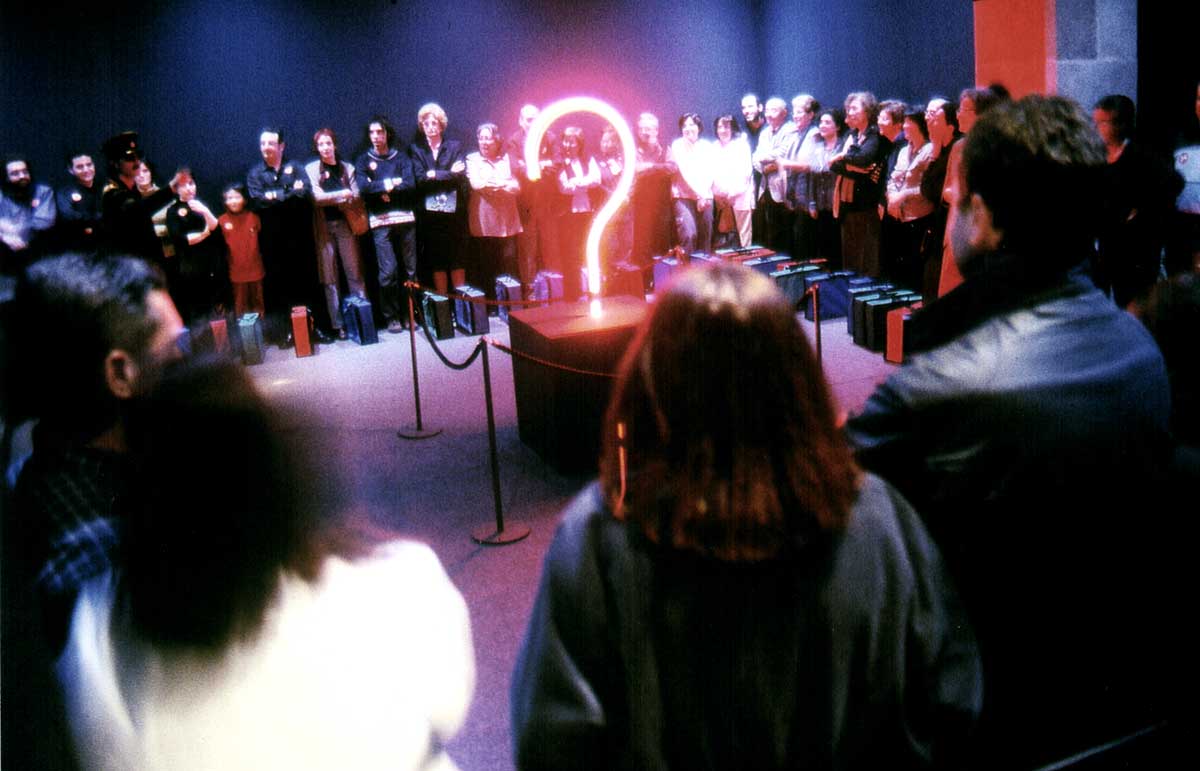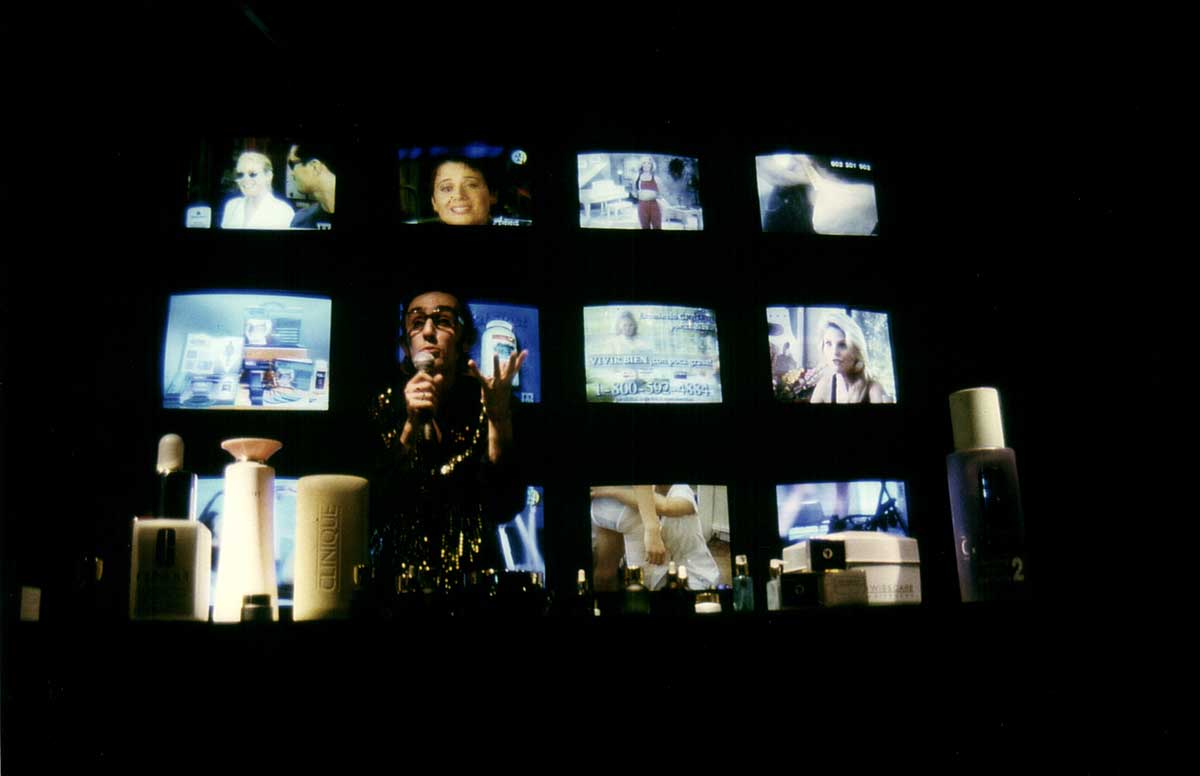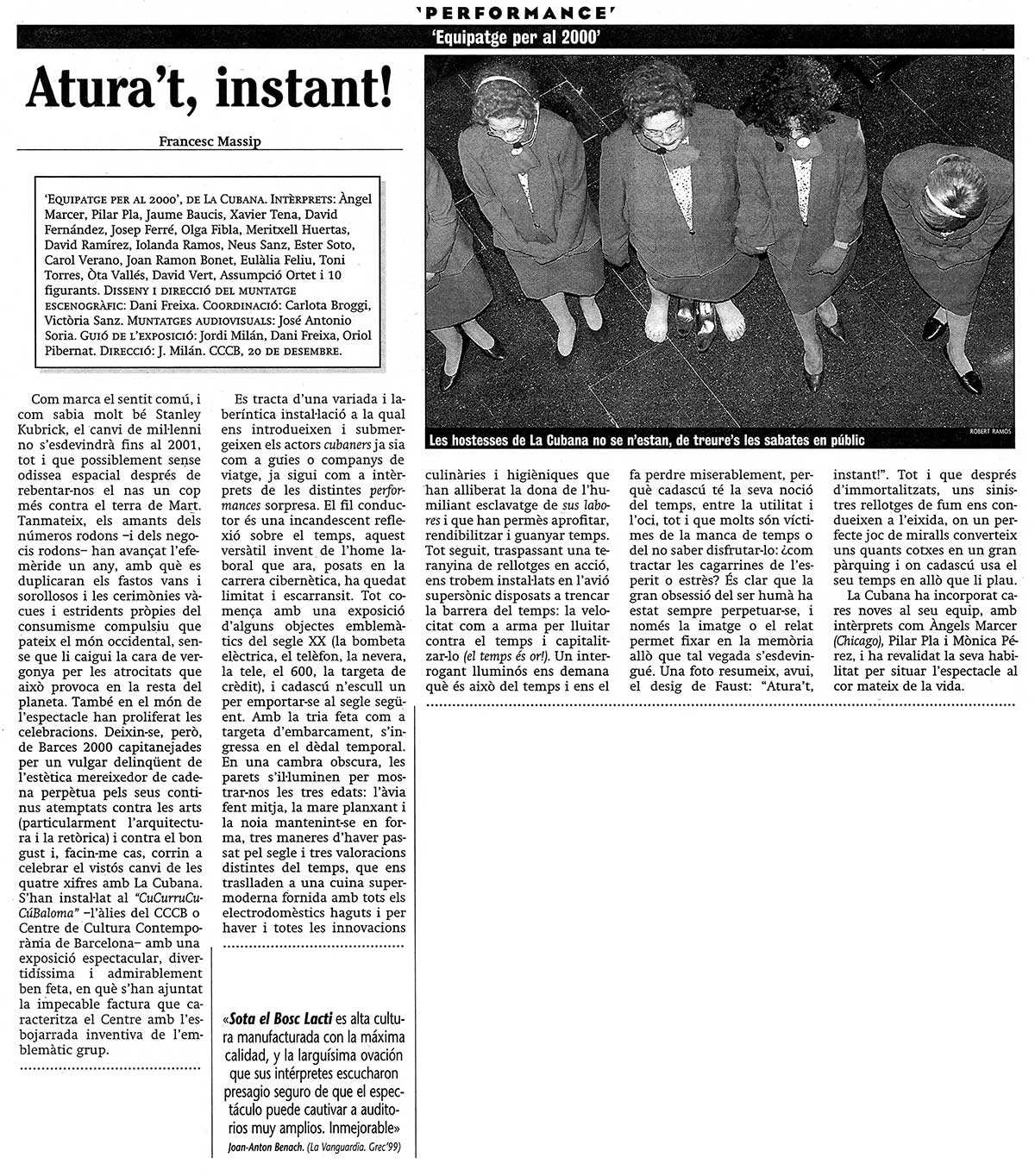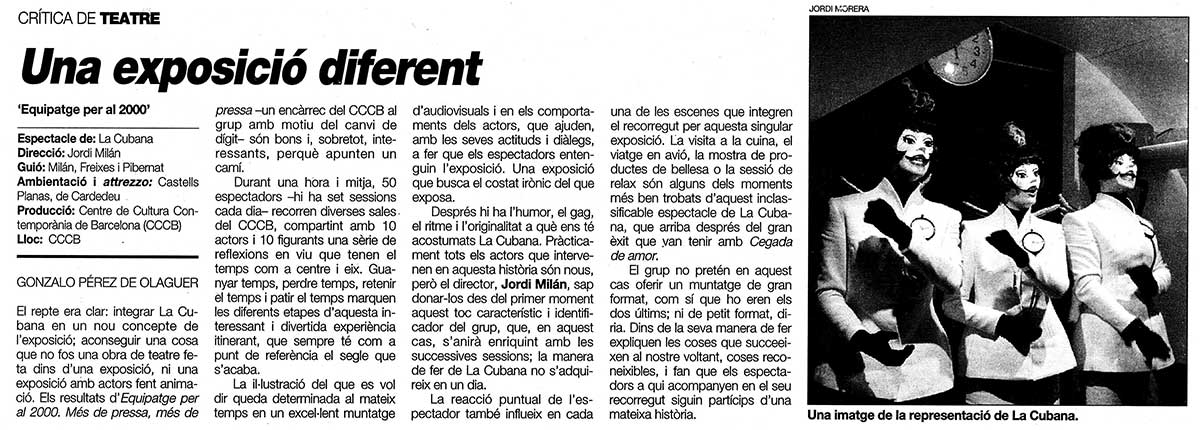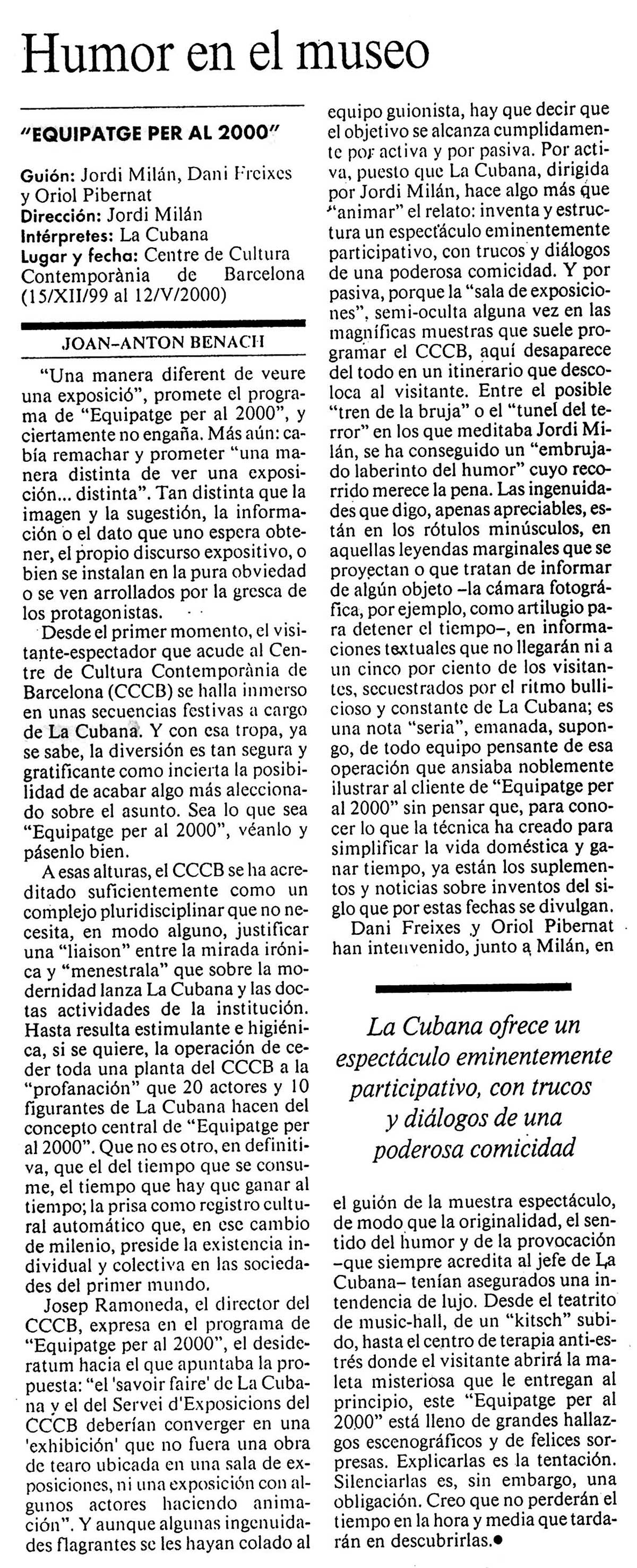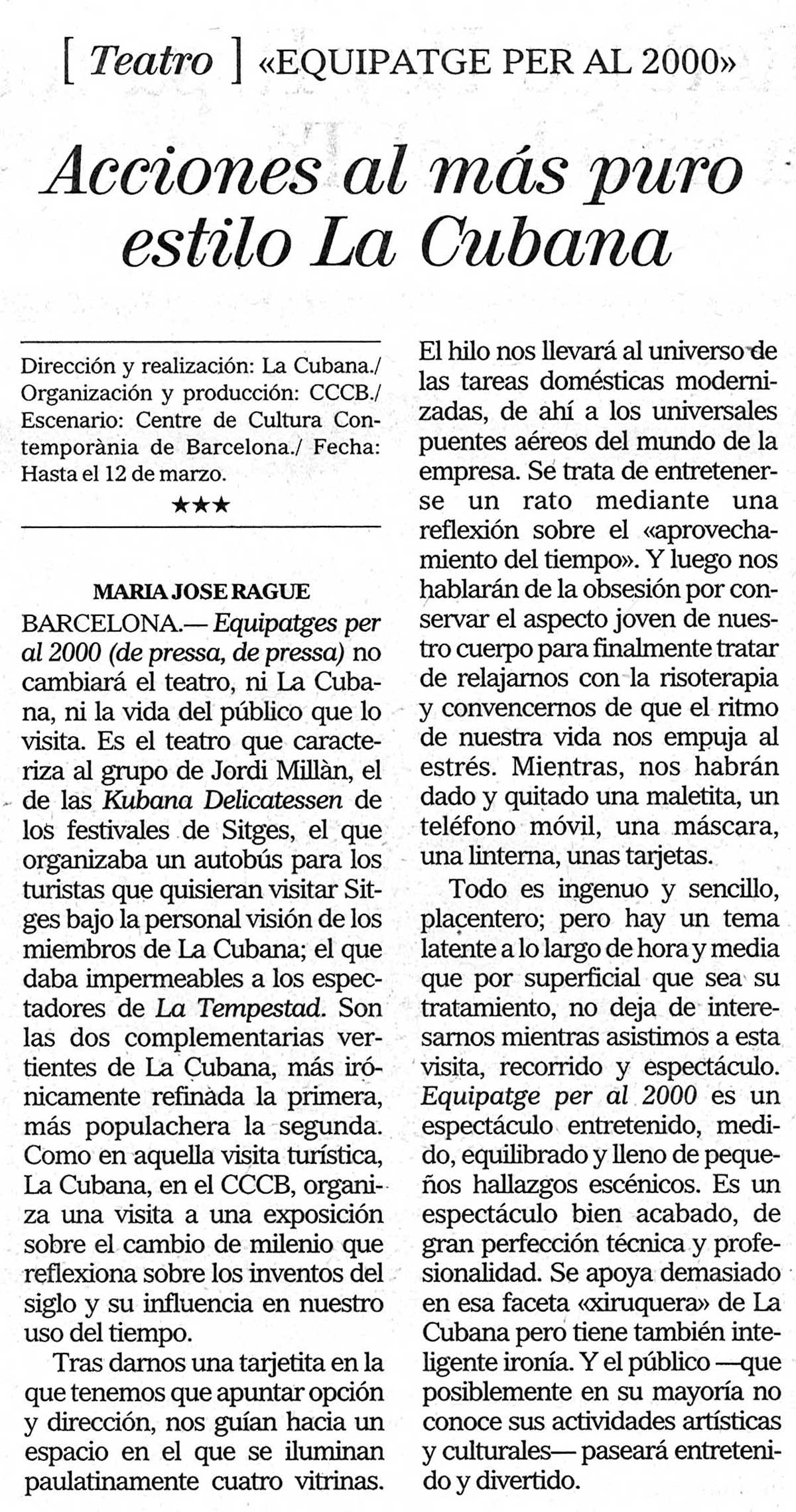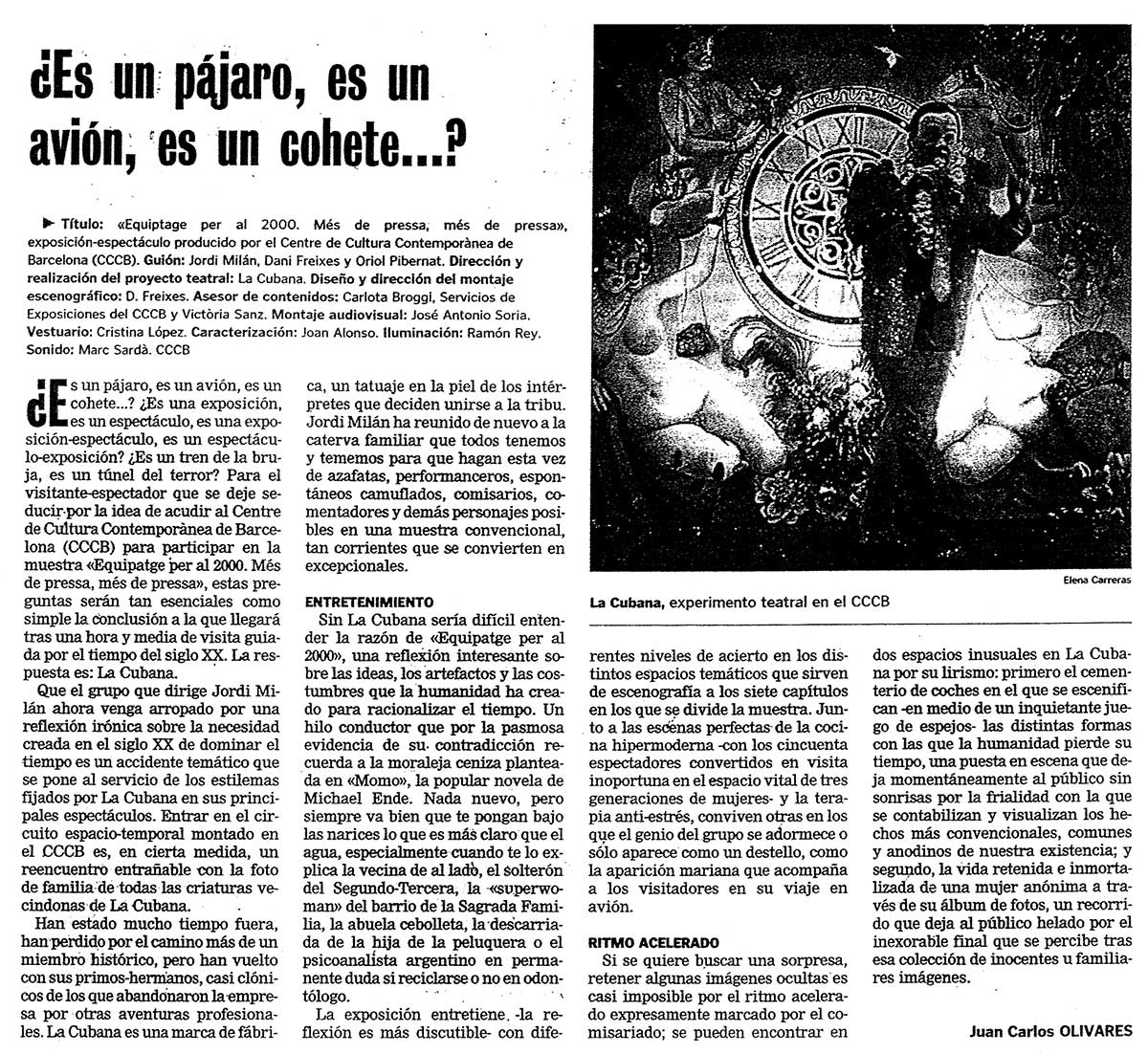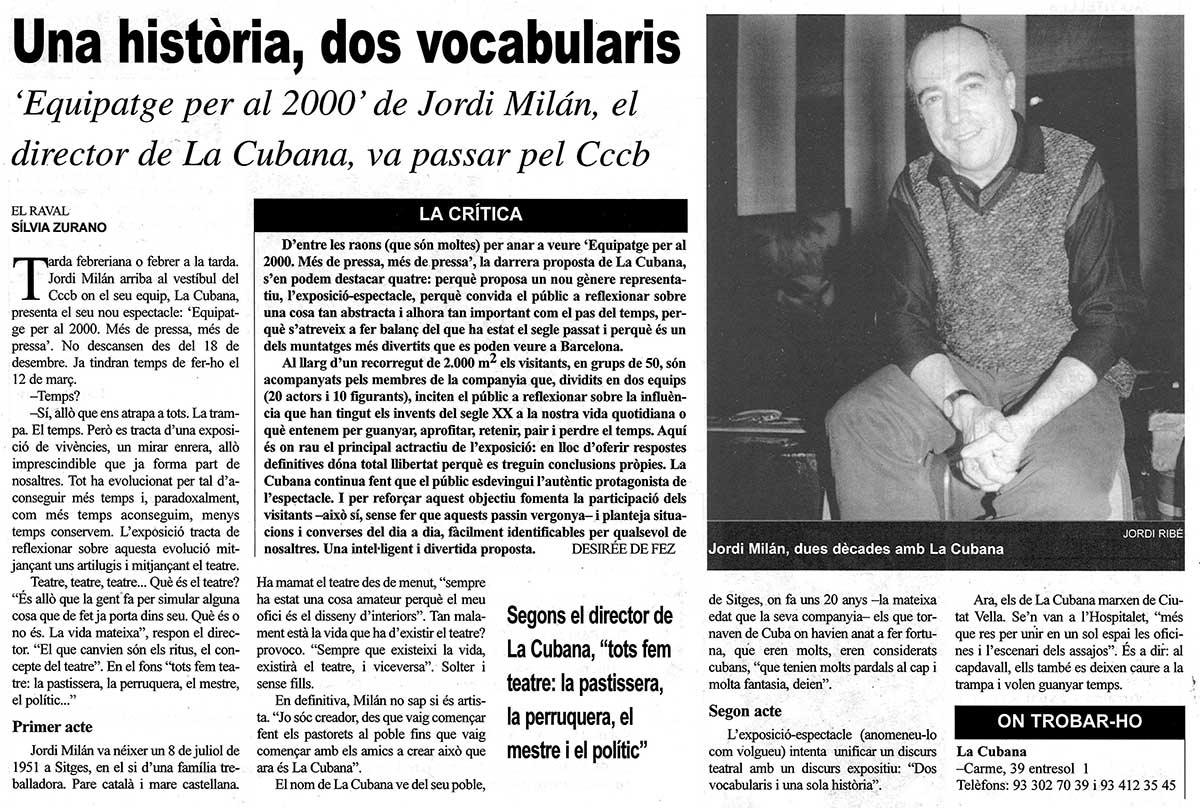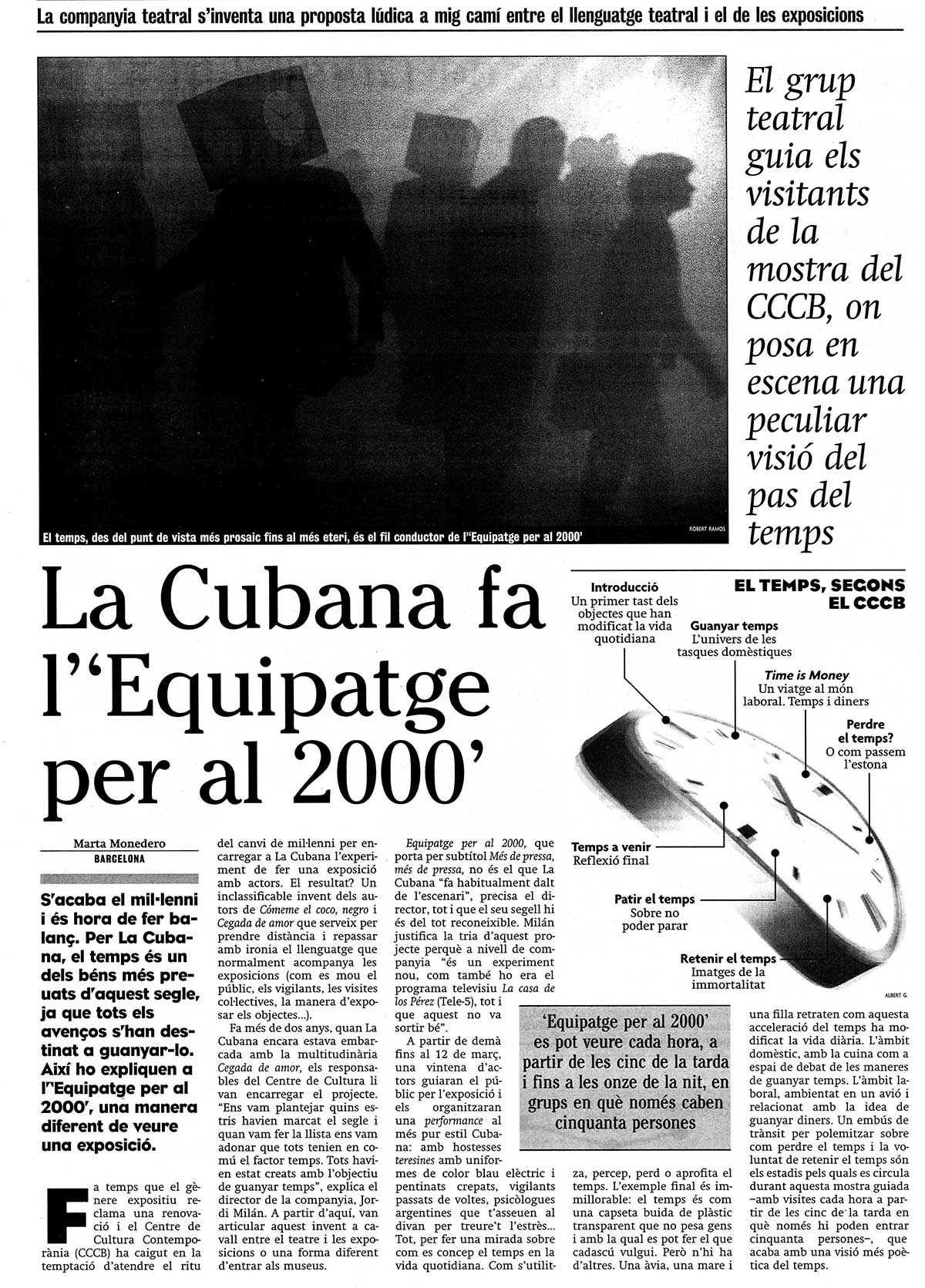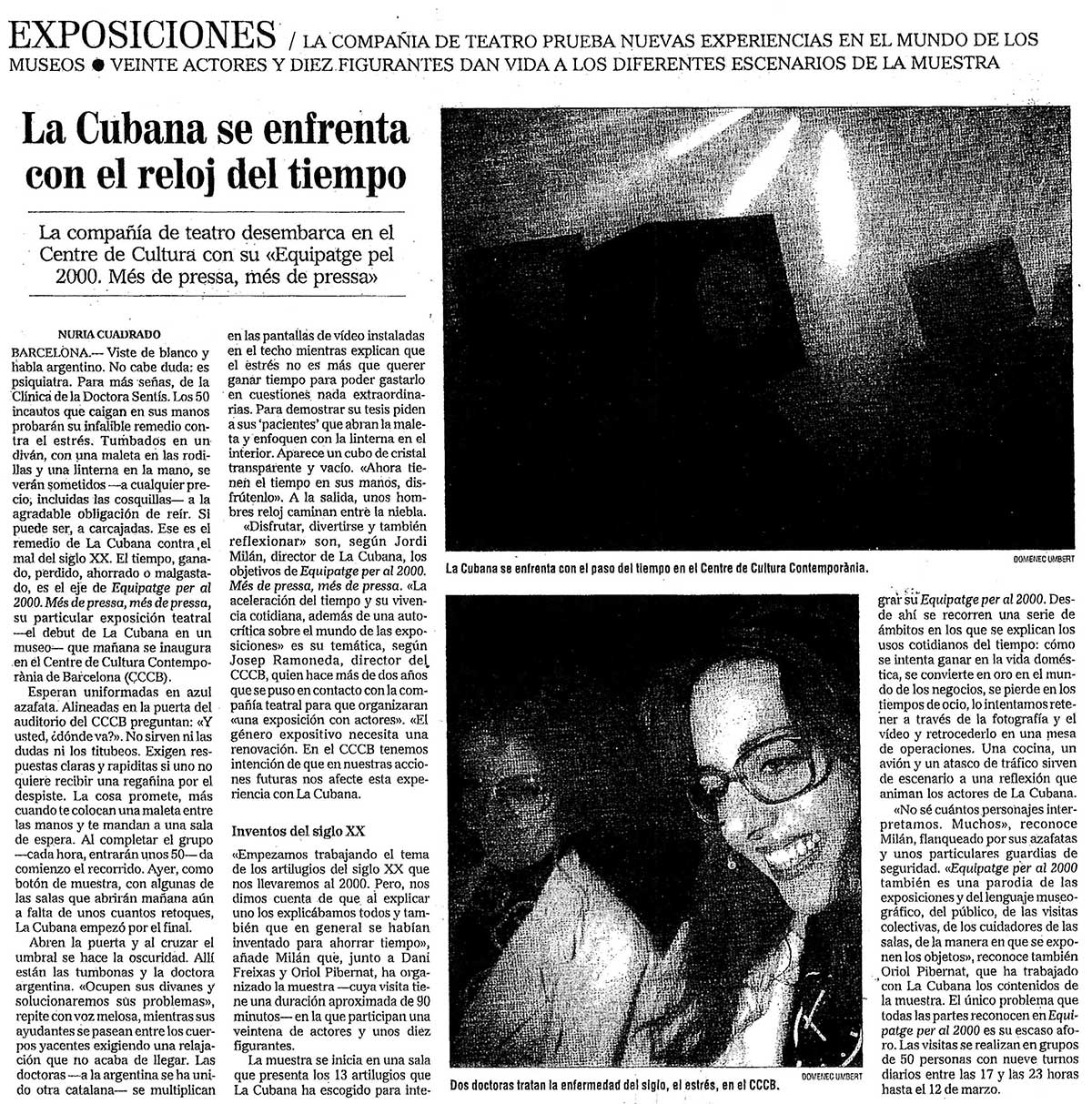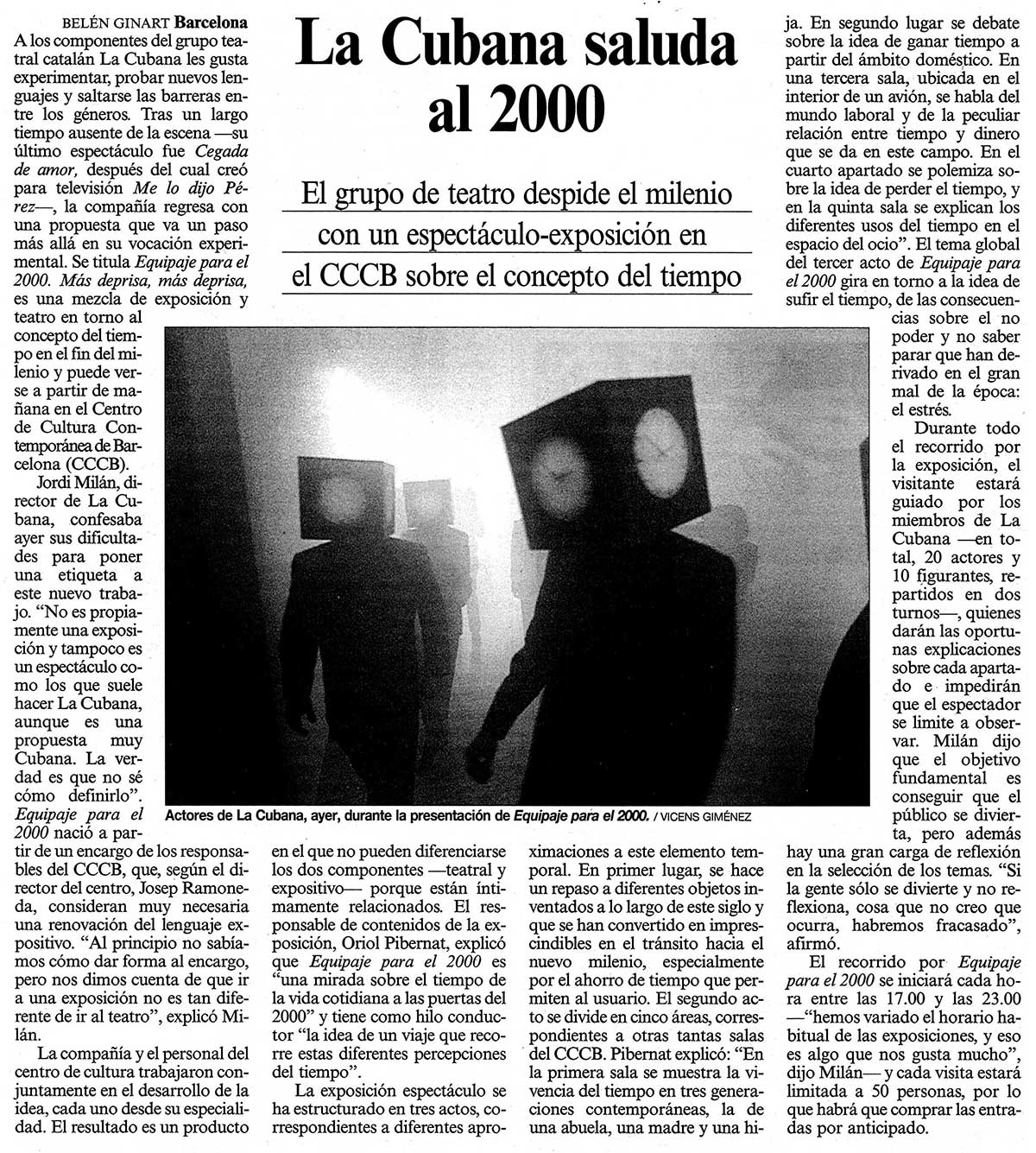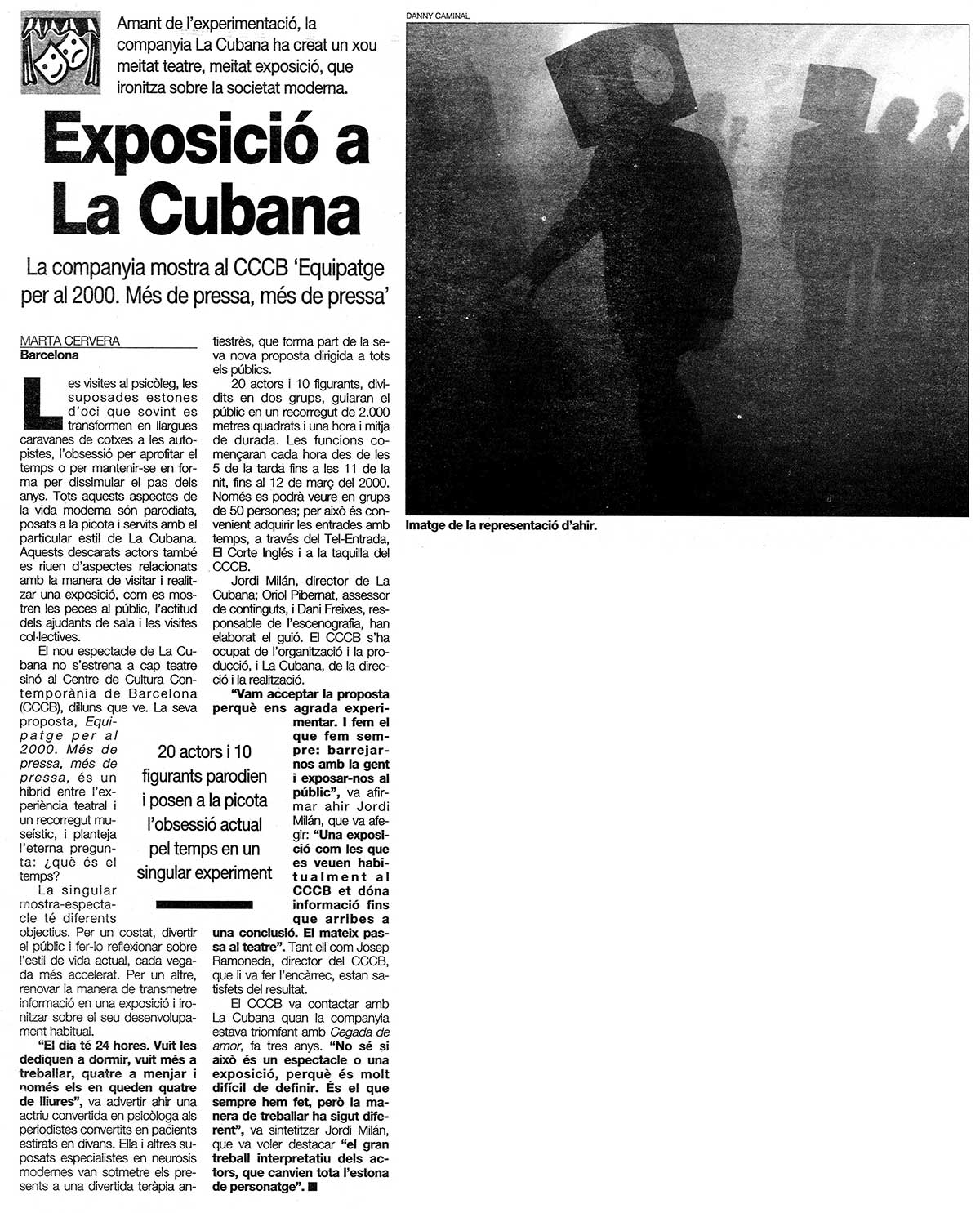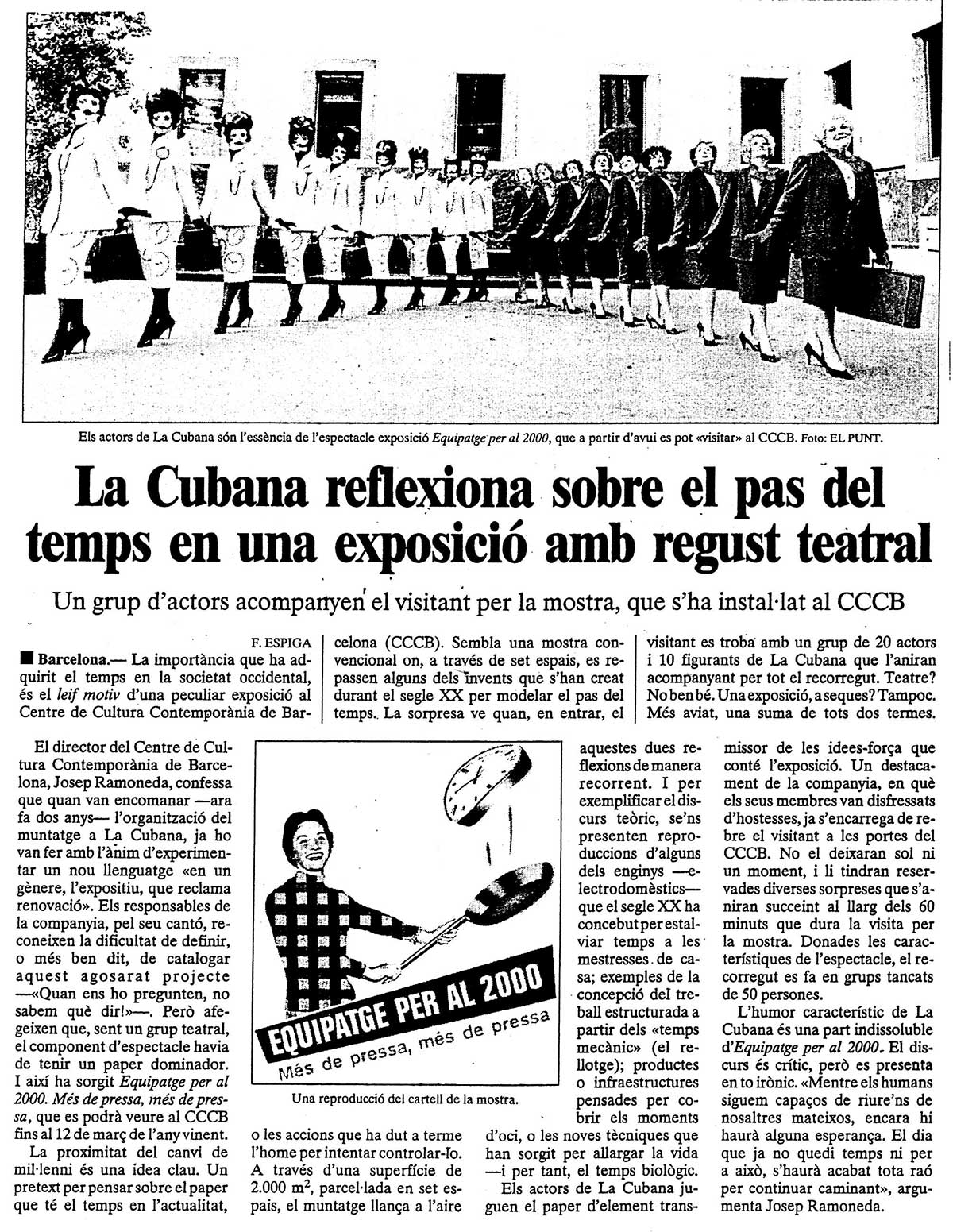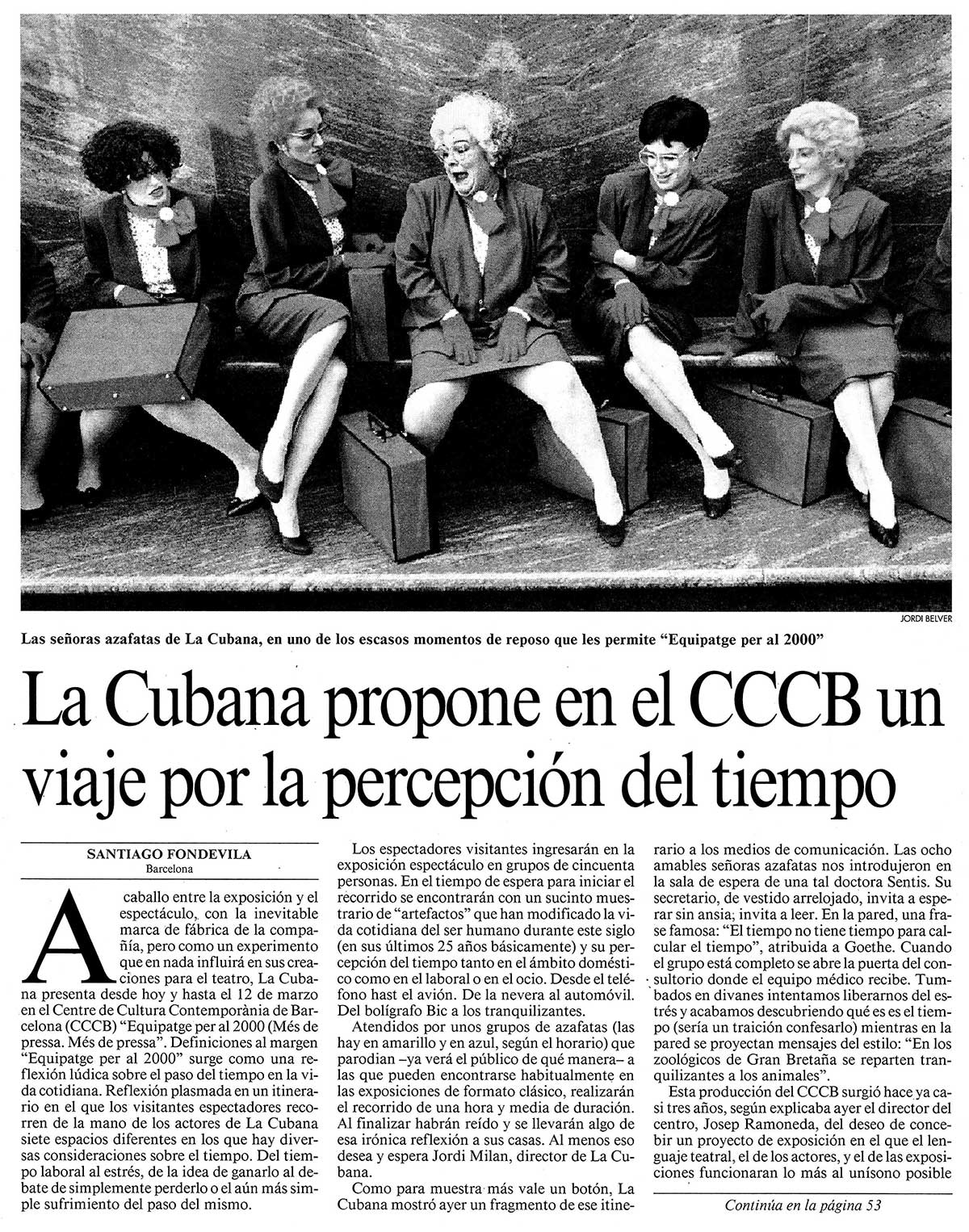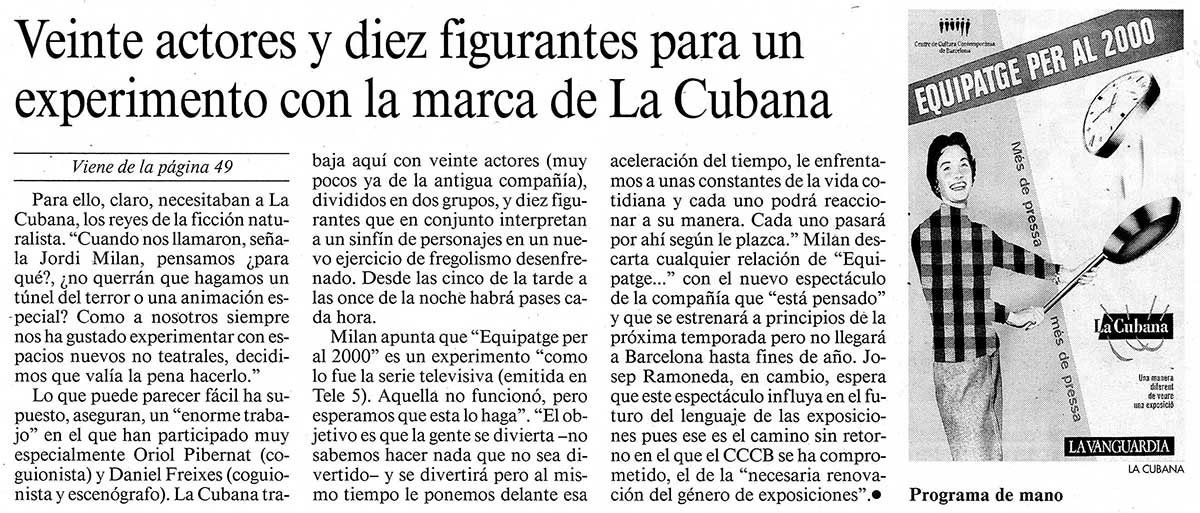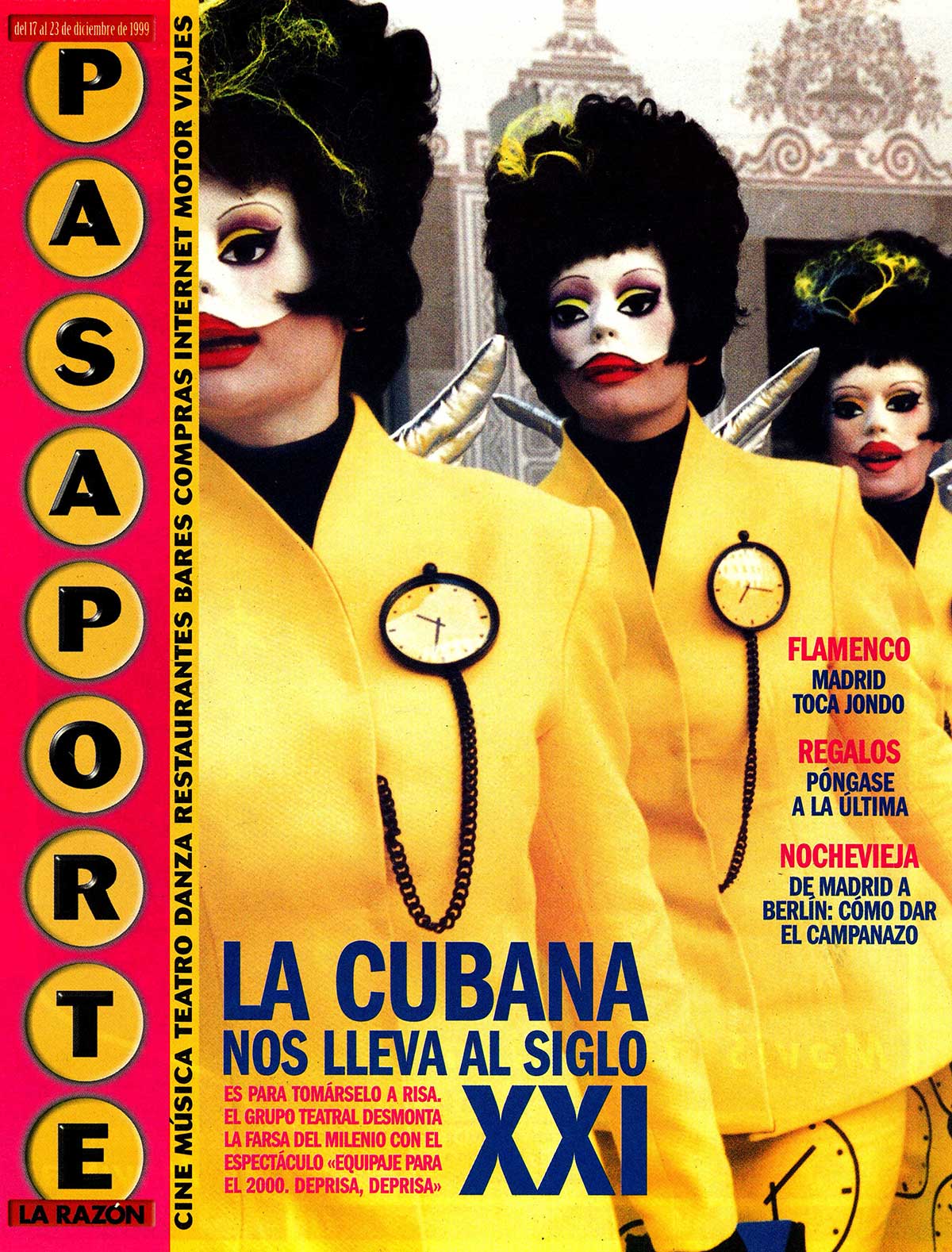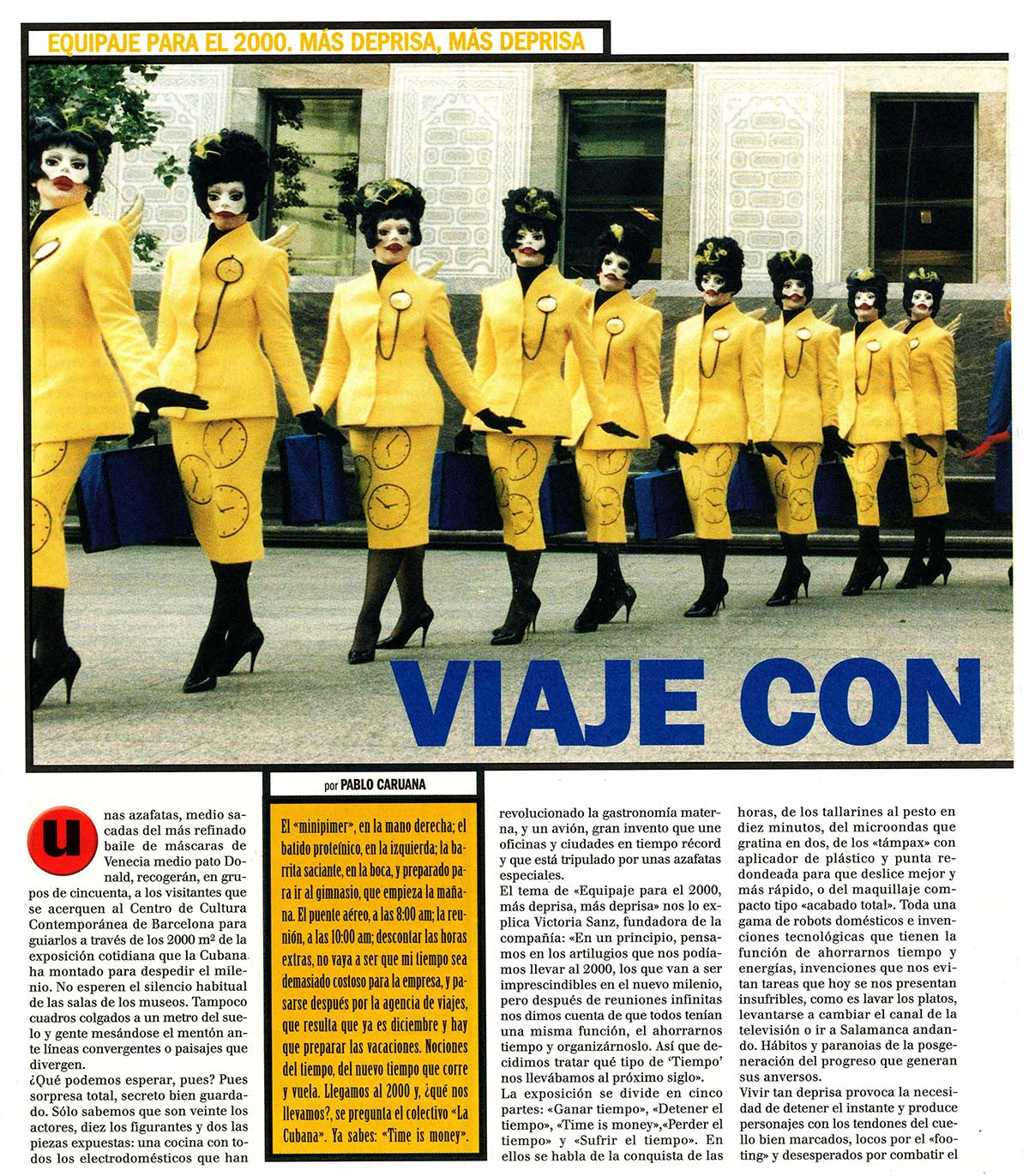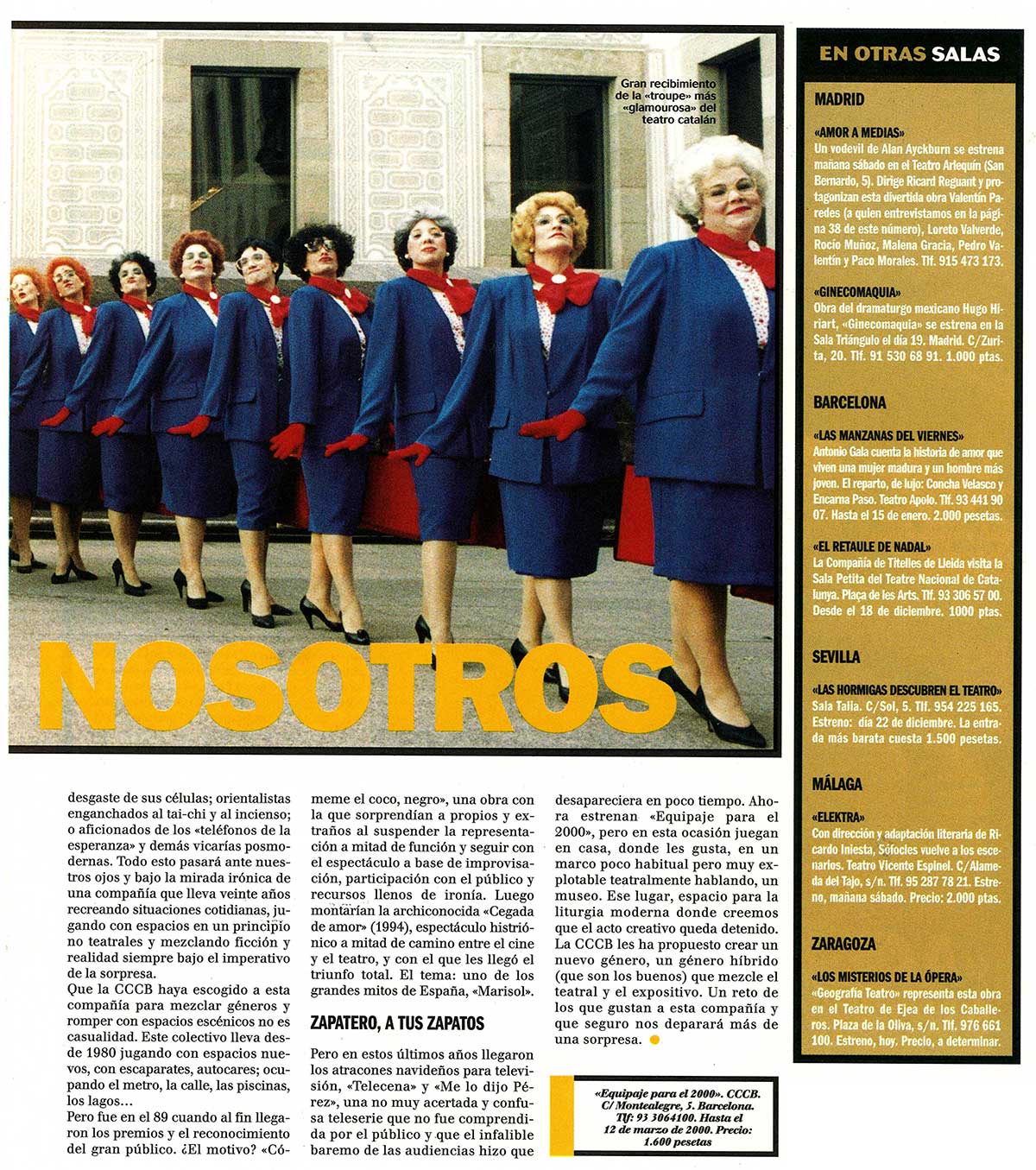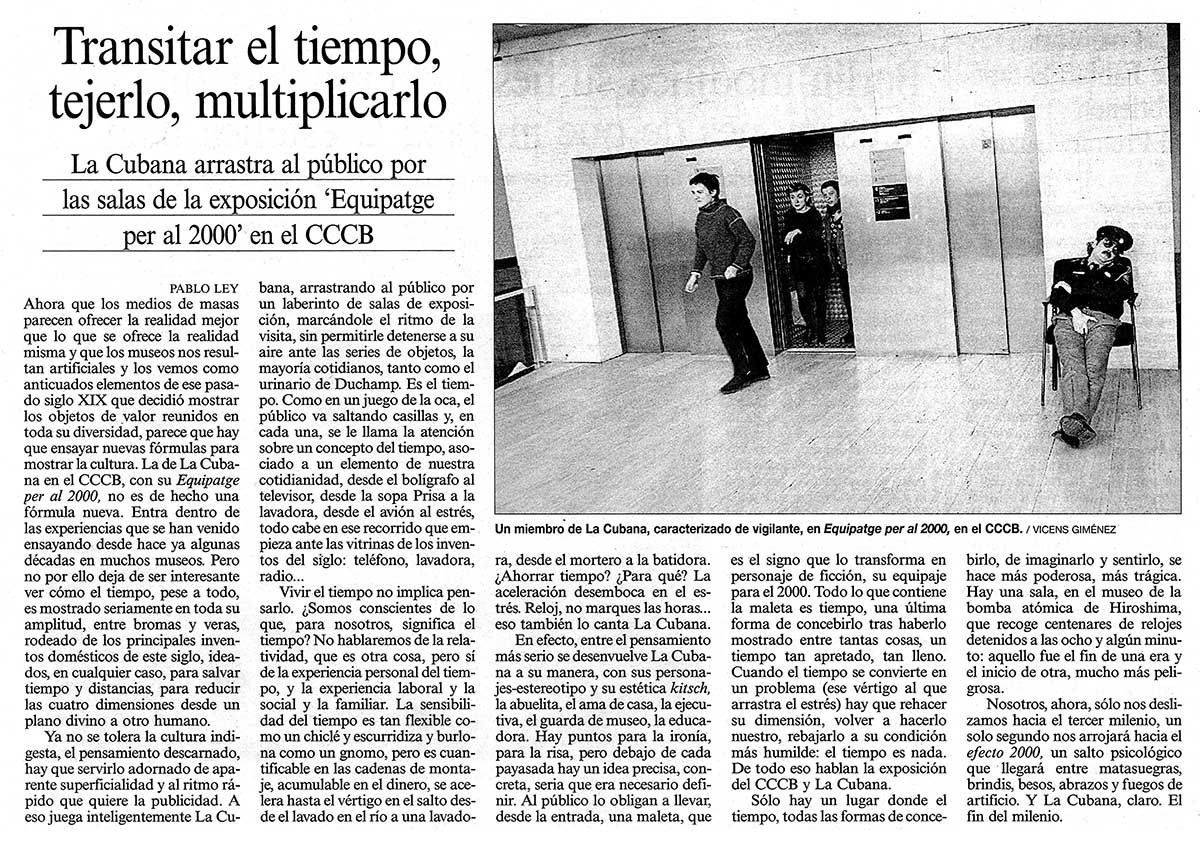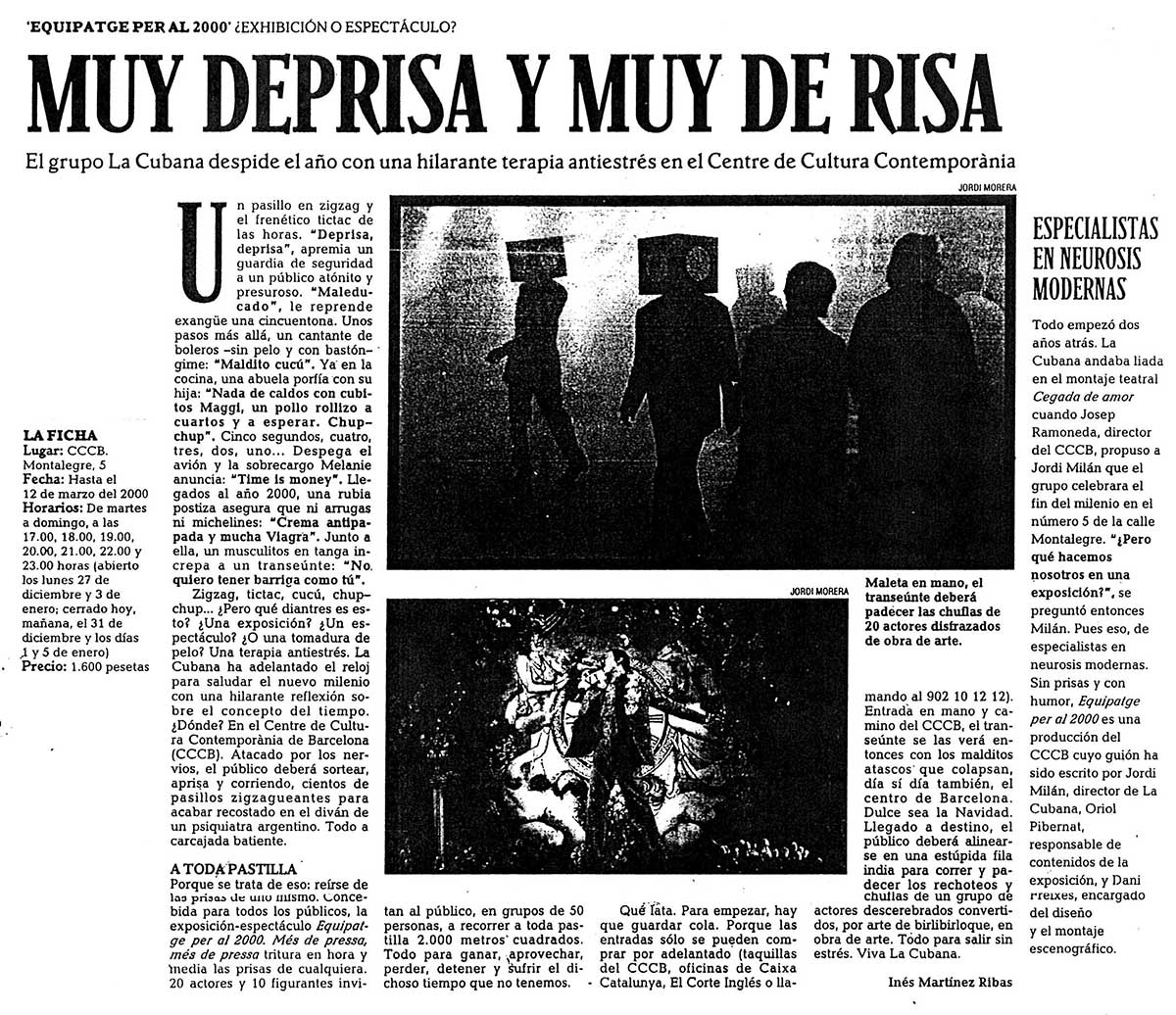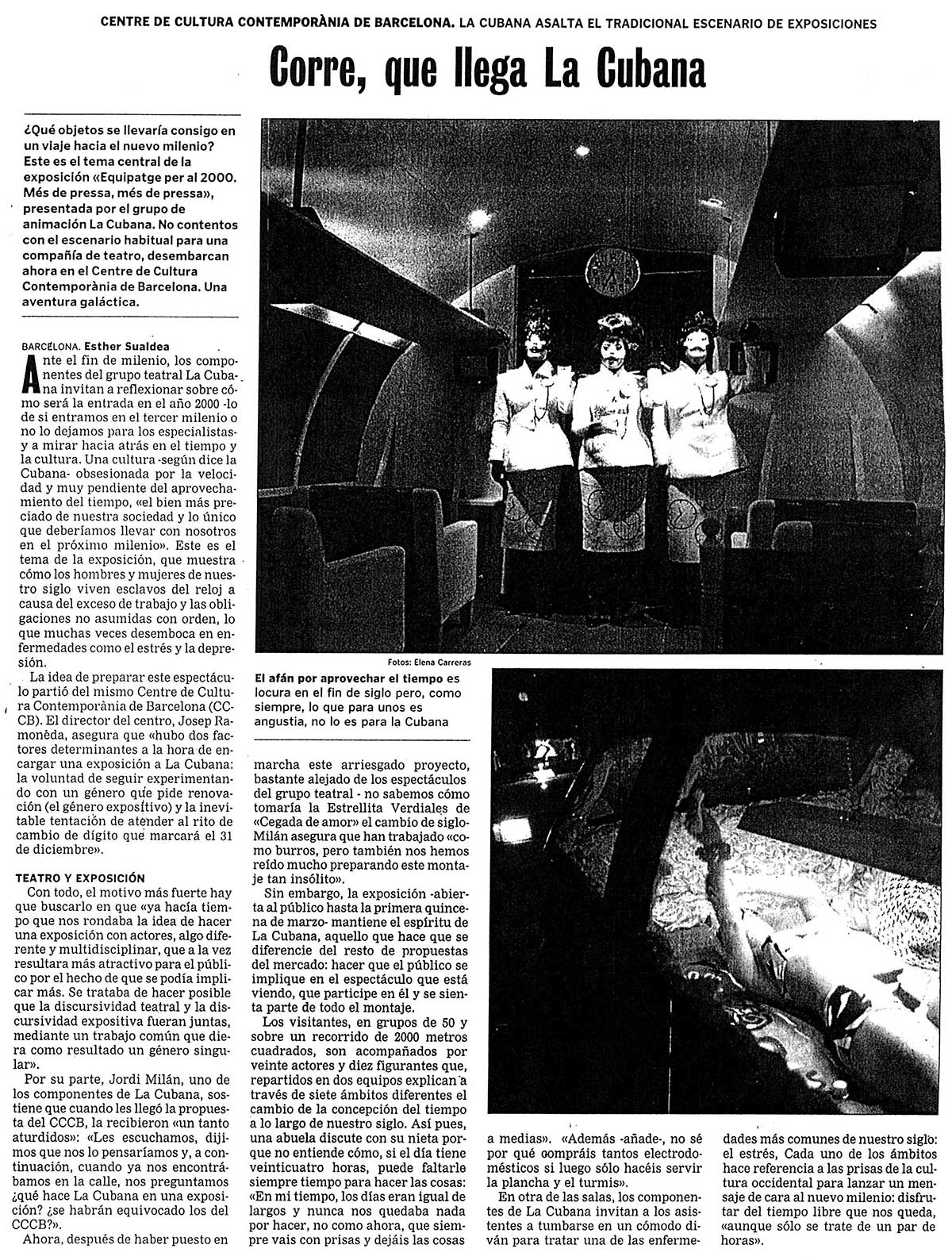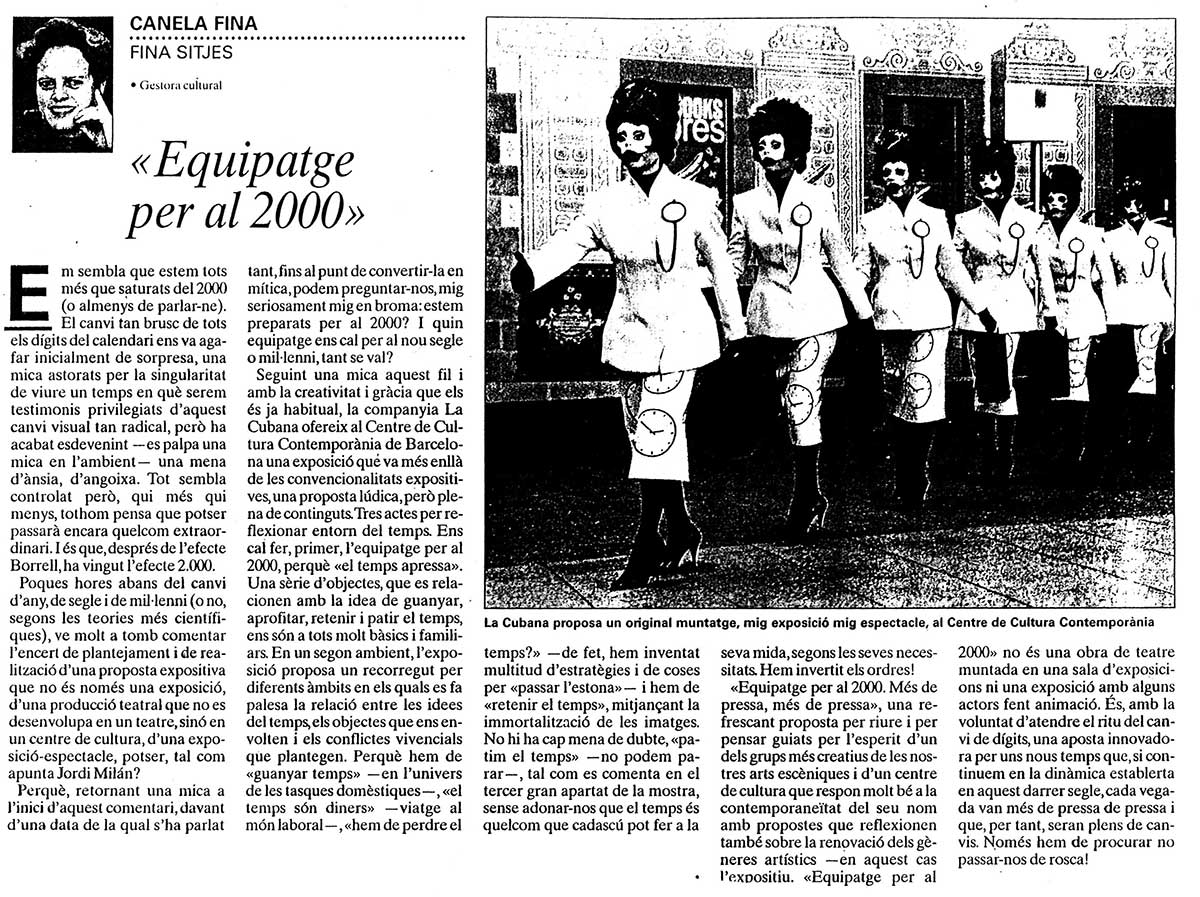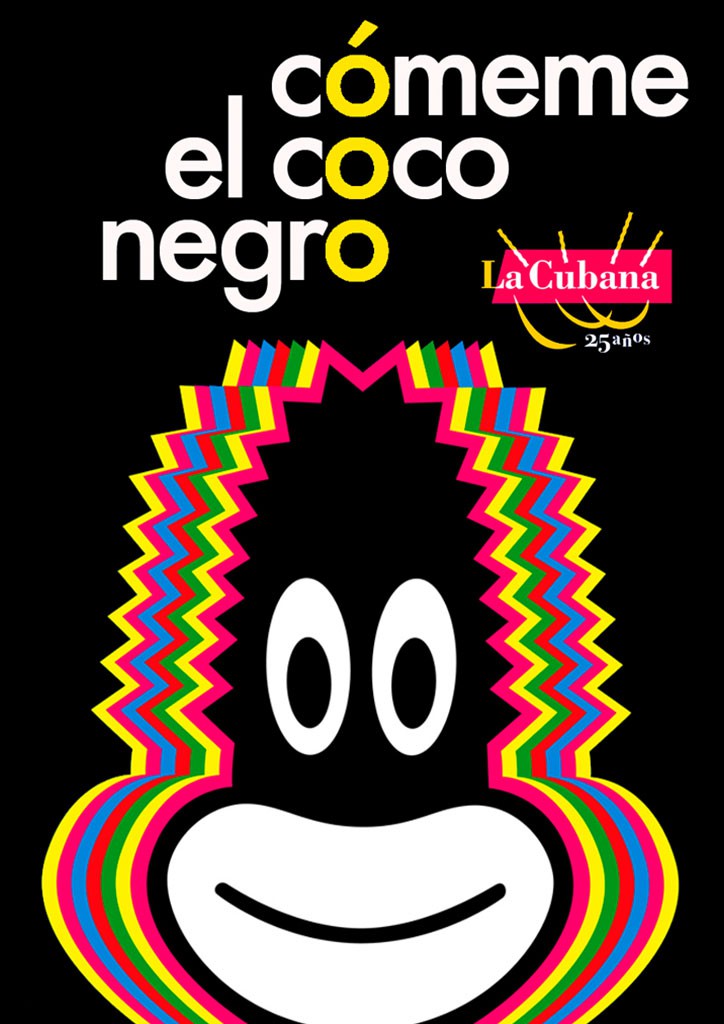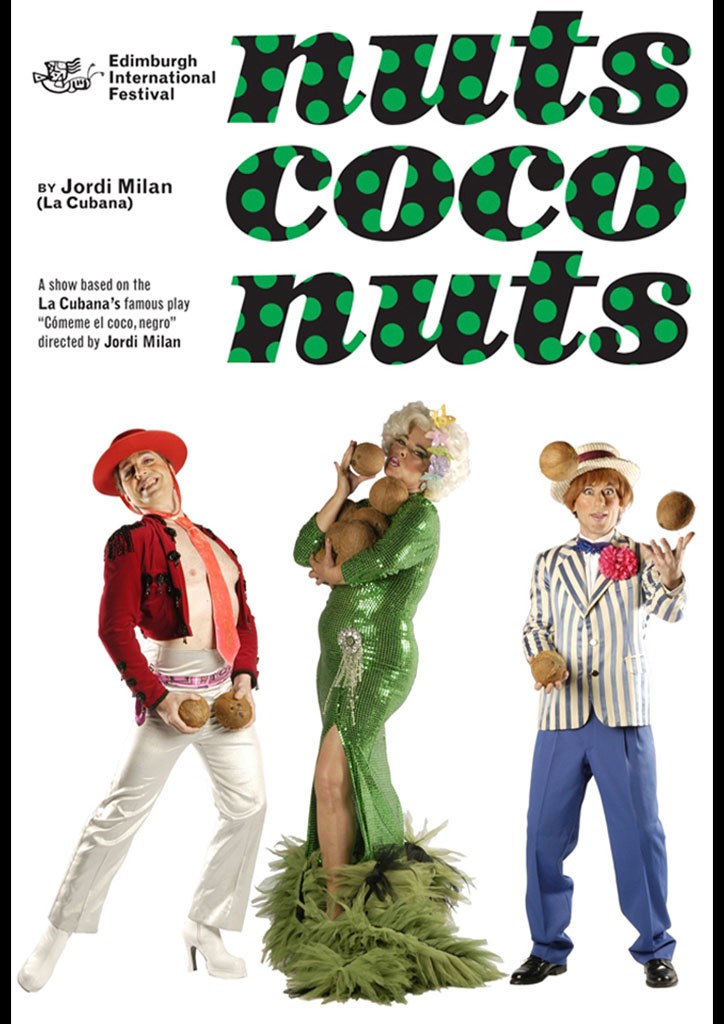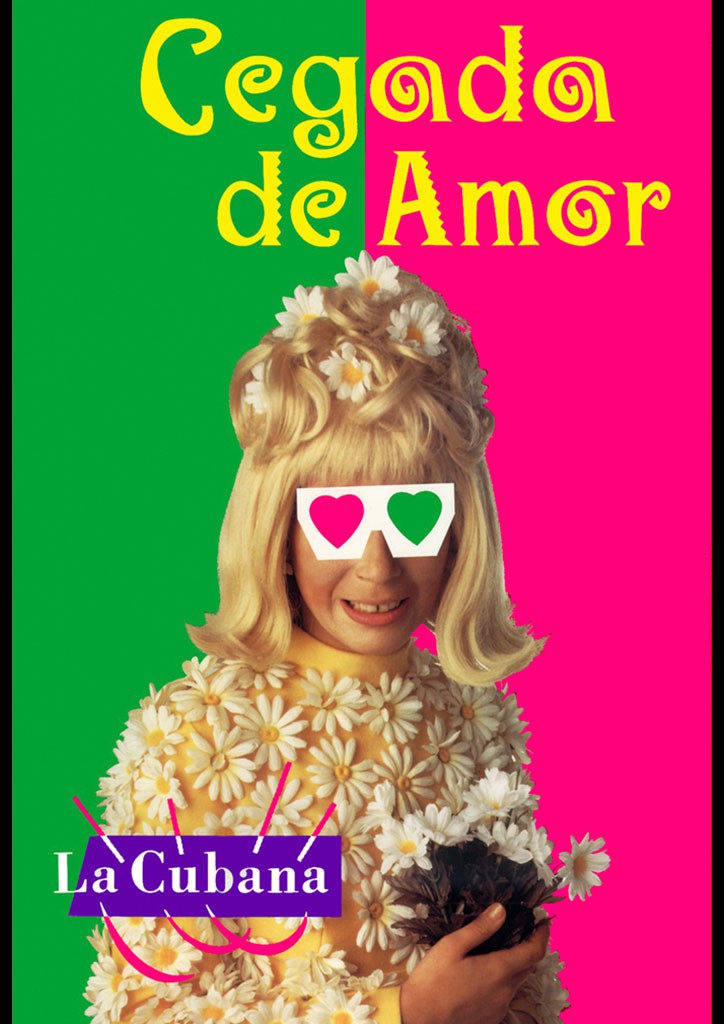Equipatge pel 2000 (Luggage for 2000’s)
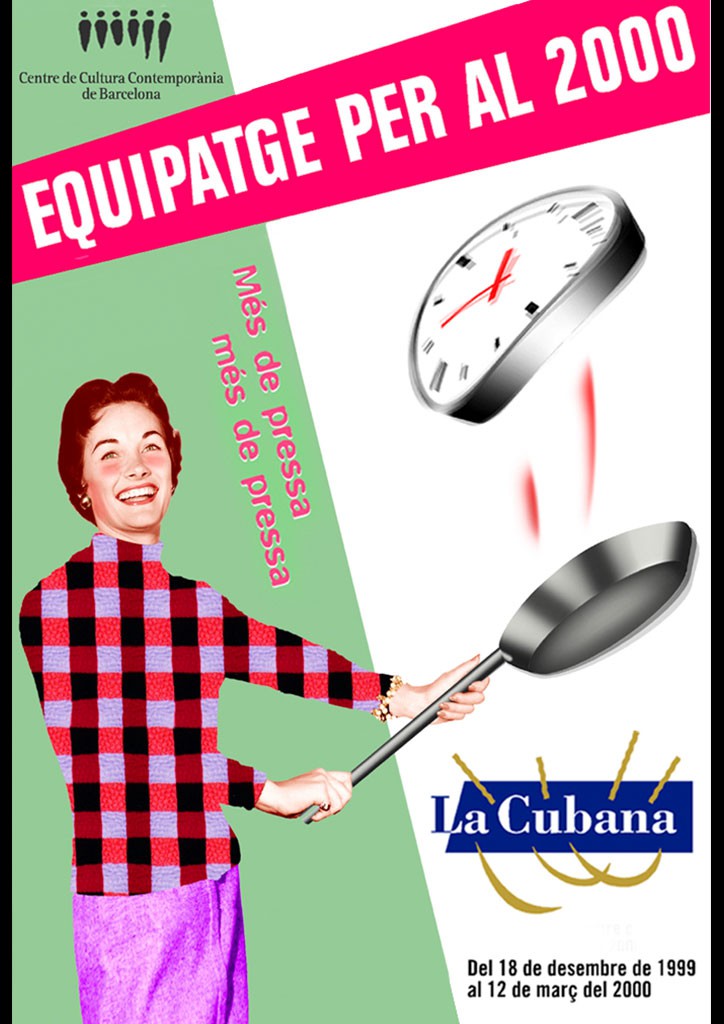
Introduction
For the coming century, the CCCB (Centre de Cultura Contemporània de Barcelona) assigned us the project of an exhibition. First thing we wondered was: ¿What would La Cubana do in an exhibition? We thought about it and accepted the offer. Consequently, it was about to use a different space to explain what we always explain about everyday life; but in this case, using two different languages: The theatrical and the used in exhibitions. A very difficult experience to categorize but a very positive one for La Cubana.
IdeaIt is the end of a millennium, a century washes off, and it is when everybody feels impelled to think about our lives and on how we are going to face the new 2000. It is the same gesture as it is looking back to go forward. It is part of our spirit to be obsessed with speed, at all times working out the time and shaken by the technologies’ speediness. Time is, no doubt, a very precious good in our society. It lies in everyday life and within the contemporary individual’s activities. The modern world has invented and promoted a huge amount of artefacts that are directly or indirectly related to a particular idea of time. However, our culture has shaped such a perception of time that has a strong influence on our day-by-day experience.
ArgumentAt the CCCB’s lounge, there is an exhibition of the twenty-century’s creations: the phone, the pen, the television, the shaving blades, the camera, the airplane, the fridge, the washing machine, the aspirin, the contraceptive pills, the radio, the car, the light bulb, the zip, the credit cards, the computers and one question: Which twenty-century machine would you bring with you to the new 2000 if you could?
The audience, individually, chooses a machine and a very diligent stewardess give them a suitcase in order to begin with their expeditious journey. The stewardess go through all machines chosen by the audience, these have been diverse, but apart from having their instantaneous function, they were all created to gain time, to fight against time. Therefore, what they have actually chosen is time, the need to have some time. So, the exhibition talks about time, a journey, and a trip, to know what time is in actual fact. A journey through some different spaces would show the audience the variety of shades time has:
- Rushed by time
- It all revolves around time
- To gain time
- To fight against time (or time is money)
- To waste time
- To keep the time
- To suffer time
- The forthcoming time
You can watch a piece about it in here:
Rushed by timeWithin this space, we are invited to think about the speediness of time in our society nowadays. We are living as prisoners of time and so, since we are supplied with all the machinery that allow us to go faster. A whole lot of objects to measure time, mapping out our journey with an infernal noise.
It all revolves around timeA female singer evokes all those songs that talk about time (Time goes by, Volando, Reloj no marques las horas…)
Further on, three different aged women wonder about time: an elder women who cannot understand what “lack of time” is, refuses to be rushing around and defends the natural rhythm of things; a traditional housewife, who absolutely ignores the trap she fell on concerning a time she could never enjoy. She ignores what time is. She is the thoughtless victim of the speed culture. She goes through a feverish rhythm at all times adapted to what she is told she must do, yet she can’t stop; and an aggressive business woman fully integrated on the speed culture and firmly believes on how valuable is to save time. She believes that technology has freed women even if they are now taking double jobs still having no time for themselves. She would not feel slavered if she is a liberated woman.
To gain time
Inside a huge kitchen, the three women move around explaining how much their life has changed since they own a washing machine, a fridge or a pressure cooker. They joke about the so-called time saving advertised by the electrical household appliances makers. Each woman has a different way of looking at it.
To fight against time (or time is money)The audience is driven by elegant stewardesses through a finger and seated inside an airplane to take a business trip. There are some screenings on how much labour has developed in the later years, the intelligent managing of labour, the production lines, the transport’s history and cybernetics… The conclusion is that we can’t go wasting time and that “Time is money”. Finally, a storm makes the audience disembark.
To waste time
In the middle of a four-angled room, there is a giant neon question mark guarded by two security guards. Time goes by and no one says a thing. One can only hear the conversation from the two security guards. After a while, an stewardess demonstrates the audience how they are wasting their time. From then on, a dialog begins about what is a time waste or what is it not. A question of attitudes.
In the following room we are illustrated with a big traffic jam, and inside each car, the varied attitudes to face such waste of time: someone sunbathing, someone having a nap, someone reading, someone doing some needlework, someone thinking, someone playing games of chance…
To keep the time
A photographer places the audience in a particular position to take a picture (the eternalness of an irrefutable instant). Many ways of time keeping are discussed, for instance, by using the pictures, cinema, and video… and the fear of growing older.
The audience walks through a corridor where by means of pictures and videos, one can appreciate different moments in life: birth, communion, Palm Sunday, the wedding, the first son, silver wedding anniversary, the old age… Up until we get to a huge room where a businessman performs an striptease and proclaims, proudly, that he wants to stay young forever. Then a tombola comes up, where a charlatan offers all kind of services and products to render tribute to the body as well as many plastic surgery treatments. Gives everybody a free plastic surgery (a see-trough plastic mask to put on).
To suffer time
The audience gets to a very quiet room feeling sick and exited. Fifty couches wait for fifty sick people to suffer and fight against time. While everybody seats quickly at the psychiatrist consulting room, he invites them to think on how fast their lives go. He relaxes them and cures them. At the end, he gives them the chance to know the reason for their illness: time. It is about time to open the suitcase that they have been carrying all the way, inside it, there is a small transparent box. Time is what they are going to find inside.
The forthcoming time
It is the last space. A space with no references. A space where everything is white. A space full of a heavy mist. A pointer less clock presides the room. Some clock-characters walk very slowly. The audience leaves the exhibition with slowness. Finally the big question: ¿are you sure to bring some time for the 2000?
PREMIÈRE: December 14th, 1999, Centro de Cultura Contemporánea de Barcelona (CCCB).
PLACES WHERE IT HAS BEEN REPRESENTED: Barcelona
PERFORMANCES: 360
SPECTATORS: 25.000
PERIOD: from December 14th 1999 to March 12th 2000
SCRIPT:
Jordi Milán
Dani Freixes
Oriol Pibernat
CAST:
Jaume Baucis
Xavier Tena
David Fernández
Josep Ferré
Olga Fibla
Meritxell Huertas
Àng Los Marcer
David Ramírez
Yolanda Ramos
Neus Sanz
Ester Soto
Carol Verano
Joan Ramon Bonet
Eulàlia Feliu
Mònica Pérez
Toni Torres
Ota Vallés
David Vert
Pilar Pla
Assumpció Ortet
And also:
José Manuel Morales
Daniel Casanovas
Joel Minguet
Josep Maria Climente
Charo Coll
Pilar Santos
Sílvia Dasca
Carmeta Milà
Eva Poch
* Francesc Parra substituted a Kike Salgado
DIRECTION: Jordi Milán
Technical Staff
Assistant director: Filomena Martorell
Stage Manager: Montserrat Lisicic
Wardrobe design: Cristina López
Stewardess: José Antonio Carrasco
Taylor: Lolita Cloquell
Characterization: Joan Alonso
Choreography: Leo Quintana
Light design: Ramon Rey, Gabriel Porras
Sound design: Marc Sardà
Executive producer: Mònica Ibáñez (CCCB), Victòria Sanz
Assistant producer: Cinta Esmel
